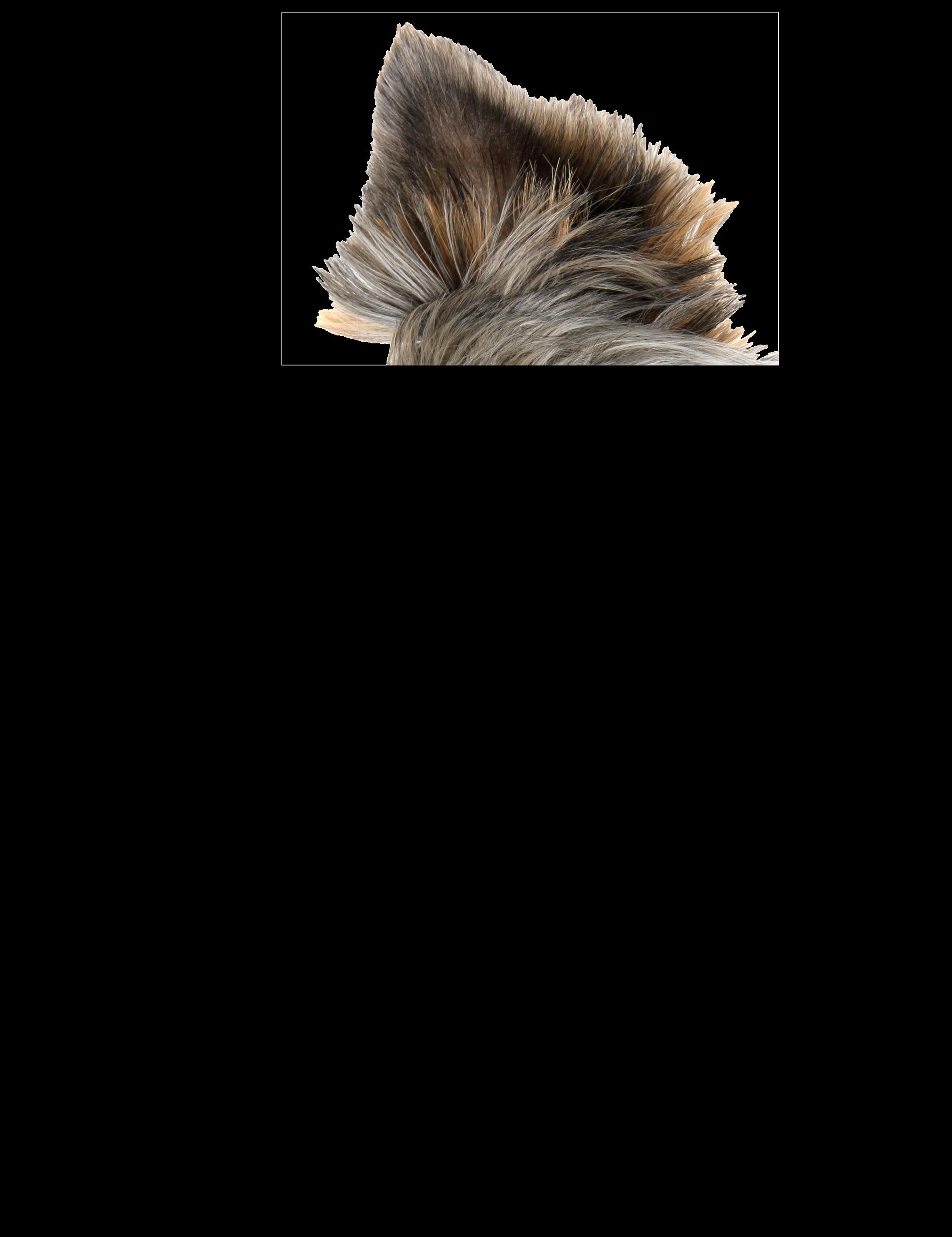






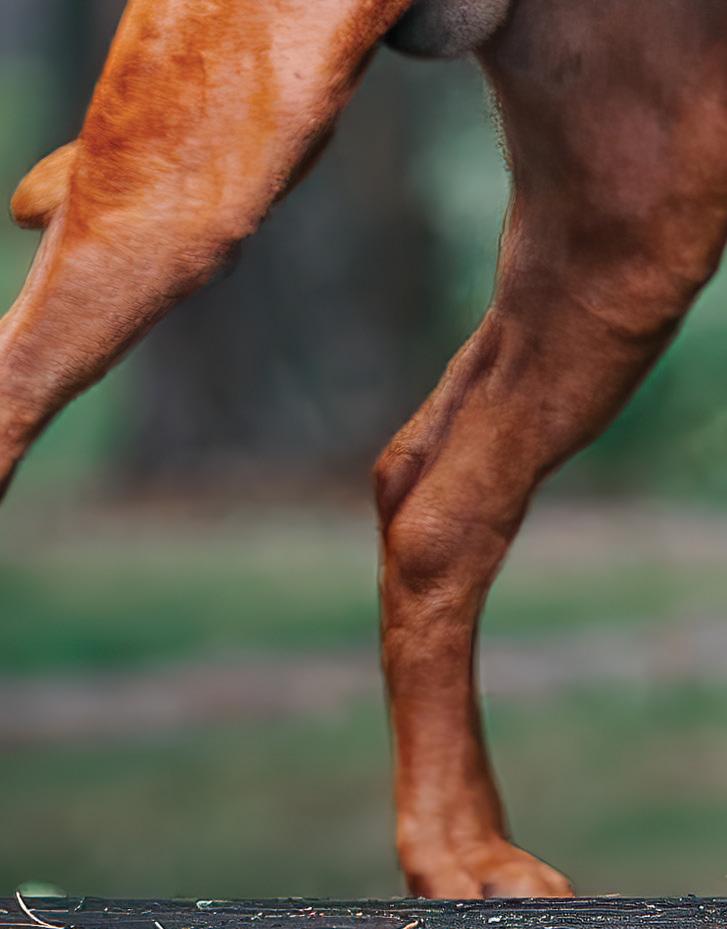

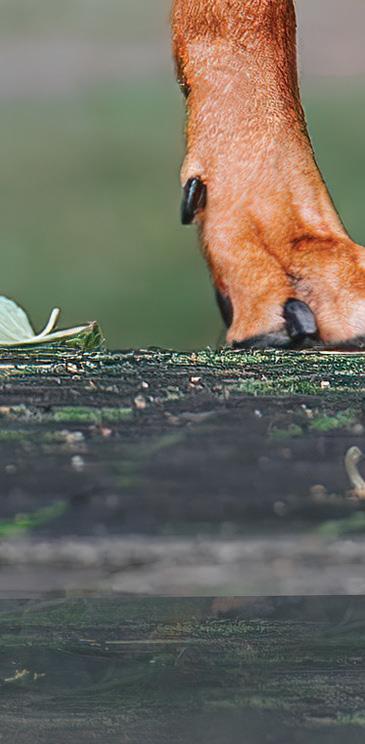
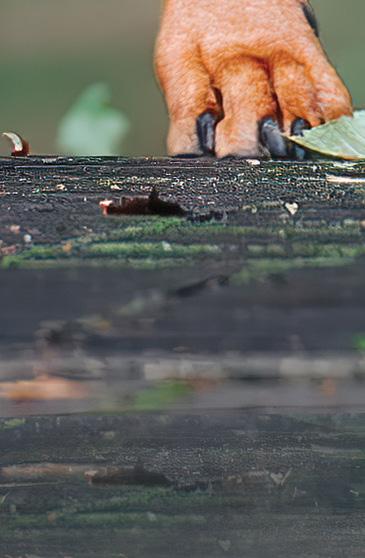
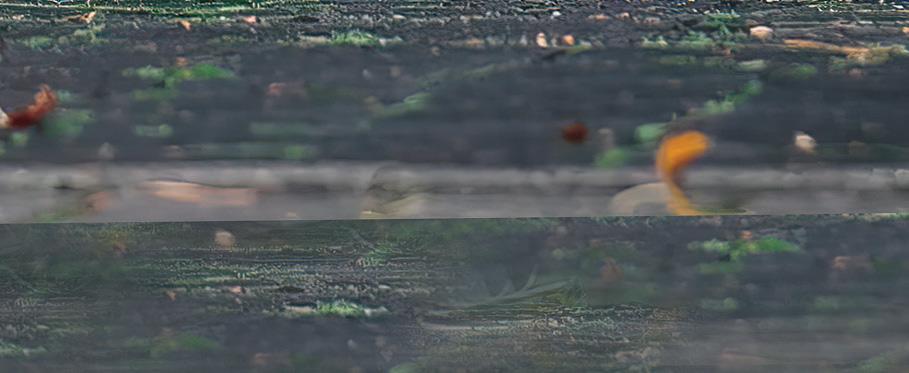



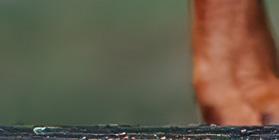
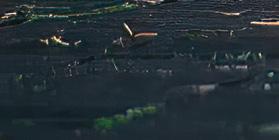




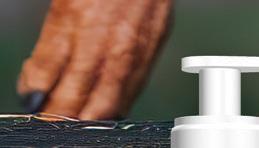
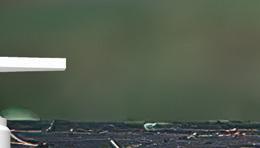
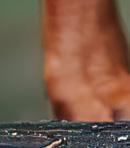

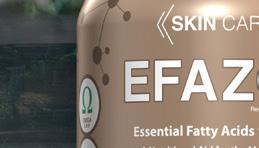
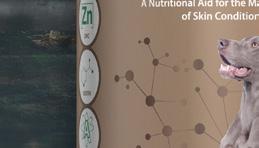
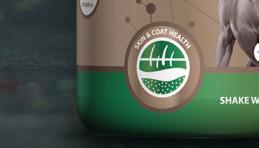


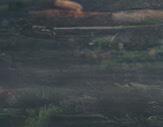






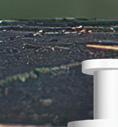
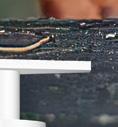
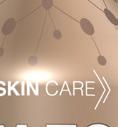

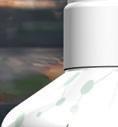



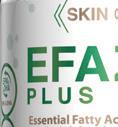

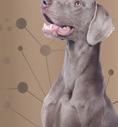



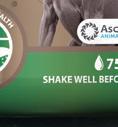
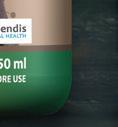
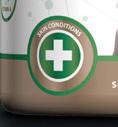





















































































































































































































































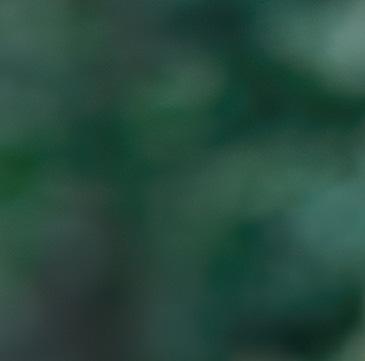
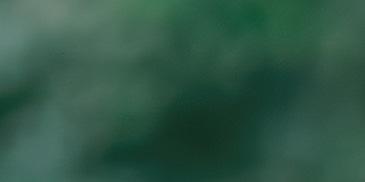







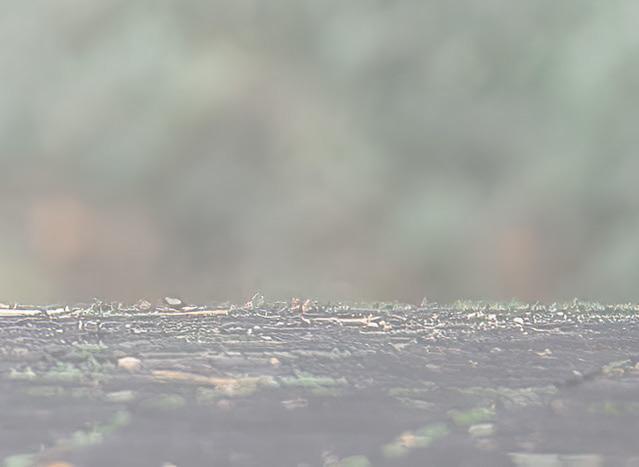


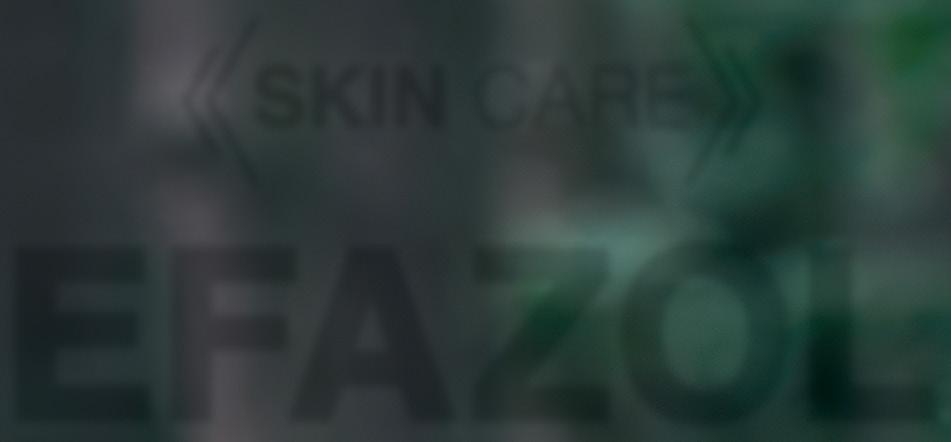











Welcome to our first issue of 2023!
We hope you had a restful festive season and are ready and raring to go this new year.
Having launched in March last year, our anniversary is still a couple of months away, but still, those ten months of 2022 gave us plenty to celebrate. With more and more reads each month we publish and great feedback from you, our readers, we’re VERY excited about what 2023 will bring.
There’s lots in the pipeline that we’ll be sharing with you in the coming weeks and months, but for now, we hope you enjoy this latest edition. It’s packed full of canine content, and for those with a penchant for trivia (like our editorial team), there is our big and bold New Year Quiz for you at the end. Let us know how you do!
With much love and best wishes for a happy and healthy 2023 for you and your dogs!
Lizzie and the DQ team
Dr Lizzie Harrison | Editor
DQ | 4B 3
xxx
Designer: Anne Royden-Turner
DQ | 4B 4 IN THIS ISSUE DIGITAL ISSUE 4B | 2023 06 The Yorkshire Terrier The spunky lapdog with a lion’s heart 16 Don’t jump for my love! How to stop your dog from jumping on visitors 20 Hiking with your dog Having fun in the great outdoors 26 Home grooming 101 Everything you need to know about grooming your dog at home 32 Is that fake news? Looking at myths and misconceptions in canine nutrition 38 Top 5 herbs To grow in your dog’s garden 42 Is my dog stressed? Identifying signs of stress in your canine companion 52 Elderly dogs Everything you need to know about caring for your canine senior citizen 56 The butt of the joke What you need to know about anal glands 62 Dog acne Yes, your dog can get it too! 66 The Great Big Canine New Year Quiz 72 Ask DQ Your dog questions answered 74 Products we love
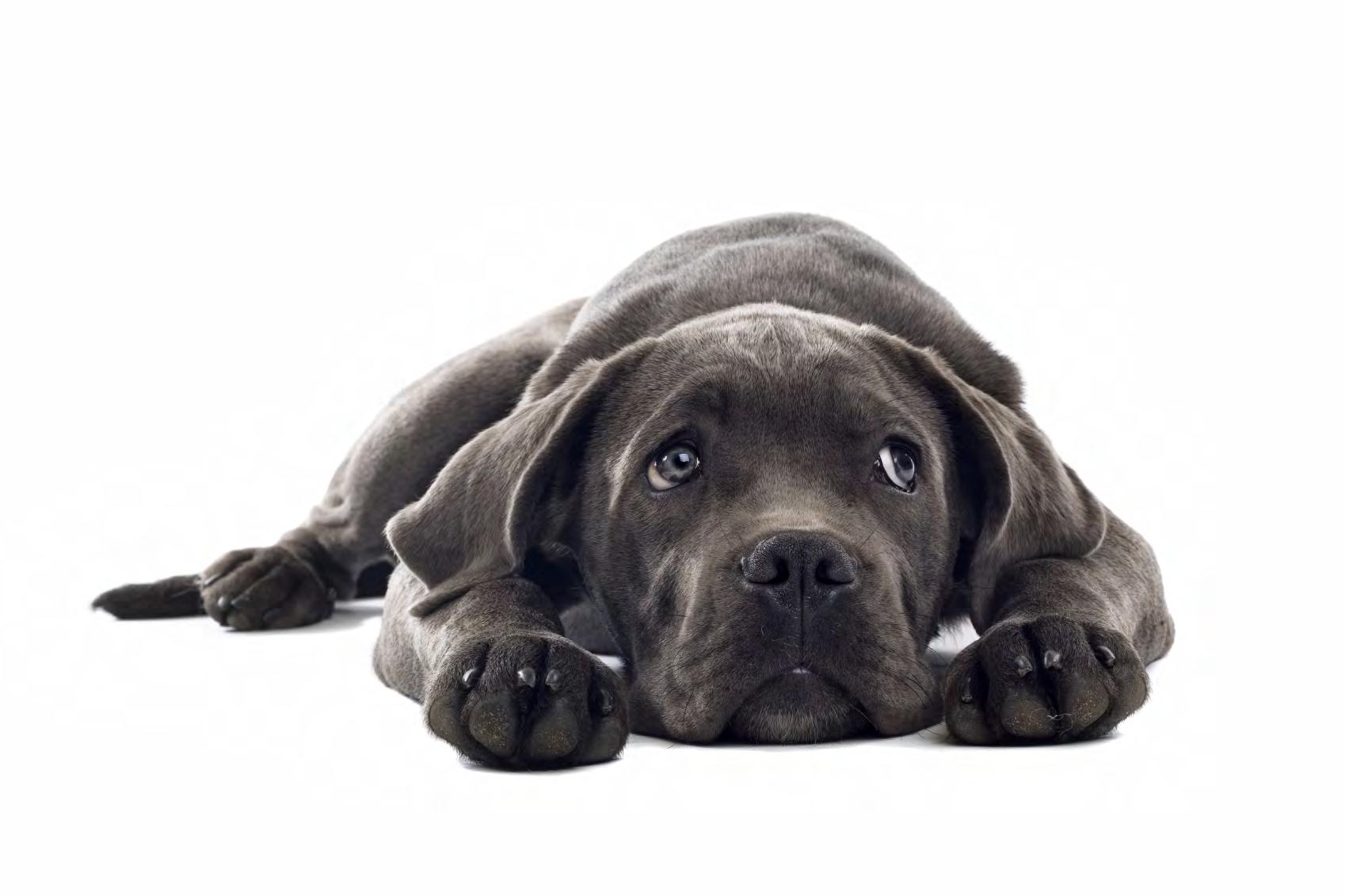

DQ | 4A BREED PROFILE
TEXT: RHIANNON CECIL
The Yorkshire Terrier
DQ | 4B 7
WITH A LION'S HEART… BREED PROFILE
THE SPUNKY LAPDOG
This month we look at the spunkiest lap dog of all time—
The Yorkshire Terrier, better known by enthusiasts as 'The Yorkie'. When it comes to this lively toy breed, looks are most certainly deceiving. Beneath a glossy floor-length coat with puppy dog eyes beats the heart of a tenacious and comical beast. He really is the perfect companion dog.
YORKSHIRE TERRIER HISTORY
The Yorkie comes from humble beginnings. The breed started out as rat exterminators during the Industrial Revolution in the coal mines, textile mills and factories of Yorkshire. It is said that the Scottish weavers brought their Scottish Terriers (Terriers from Scotland - most of which are now extinct) to the northern parts of England and bred them with local English terriers such as the Skye and Dandie Dinmont Terriers, to create the Yorkie.
With these origins, the Yorkie was considered a workingclass dog up until the English Kennel Club recognised the breed in 1886. This recognition was a turning point - they received fantastic publicity, and it wasn't long before they were considered fashionable ladies companions throughout the United Kingdom.
As their popularity continued to increase, Yorkies were bred to smaller dogs, to better suit their new roles in society - charming and witty pets accustomed to the lap of luxury. Yet, despite his diminutive size, today's Yorkie holds true to his terrier nature; he is bold, brave AND affectionate - in short, he's pretty perfect.
YORKSHIRE TERRIER OVERVIEW

Yorkies are small and compact - standing approximately 18-20 centimetres at the shoulder and weighing a mere three or four kilograms. Possibly the Yorkie's most remarkable feature is his long, straight, silky coat. Without regular trimming, it grows all the way to the floor.
The breed comes in various colours, the most typical being dark blue-grey with tan on their heads and chests. Their coats are parted from nose to tail, and they could make excellent sweeping brushes just by moving around your home!
DQ | 4B 8
BREED PROFILE
Yorkshire Terriers have small heads and erect, pointed ears. The hair on their heads is long too, and many Yorkie enthusiasts tie it up with a ribbon, which just adds to their overall cuteness factor.


The Yorkshire Terrier is an energetic, playful, but stubborn breed that may need some convincing to partake in activities like obedience training. They love to play, but it's often on their terms. They might enjoy chasing balls, for example, but won't necessarily return them, which makes for a short-lived game. They are also extremely alert and make excellent watch dogs; however, due to their size, they aren't great protection dogs. They best a Yorkie could manage is to melt a would-be burglar's heart with those doe eyes peering out from underneath his fringe.
LIVING WITH A YORKSHIRE TERRIER
Yorkies can manage apartment living but also do very well with a big garden and space to run and play. Despite their diminutive size, they have high energy levels and need to be walked daily, especially if you live in an apartment setup. Providing a positive outlet for his pentup energy will also yield better results in obedience and keeping destructive behaviours at bay.
Yorkies can be very bossy and like to get their way. Once you learn to negotiate the give-and-take aspects of the relationship, you will find an extremely affectionate and playful dog underneath all that hair, but beware –you may no longer be in charge of what happens in the house.
DQ | 4B 9
BREED PROFILE
And to be clear – their protests, if you break their rules, will not be silent. Yorkies are exceptionally vocal. They have a shrill bark, and boy, do they know how to use it. Your Yorkie will bark when he wants attention; he will bark when he plays; he will bark when he suspects danger; and he will even bark just because he feels like it. If you live in an apartment, it's a good idea to teach him the 'quiet' command, or you might find yourself with some very disgruntled neighbours. You can curb the barking through regular exercise and obedience training.
Make sure to socialise your Yorkie as early as possible and get him used to things like walking on a harness, wearing jerseys, and extensive grooming sessions. You'll need a certain level of patience to train your Yorkie, but once you've got the basics in place, you'll have a loyal, cuddly little lapdog on your hands, and he'll love you unconditionally.
Yorkies' coats have a similar texture to human hair. They are low shedding but do need regular bathing and grooming. Ideally, you should brush your Yorkie at least once a week to remove debris from his coat and prevent it from becoming tangled and matted. With a coat that grows down to the floor, the most common cut is a simple trim, so their coats are short enough to handle daily. Groomers


DQ | 4B 10
BREED PROFILE

DQ | 4B 11 BREED PROFILE
will leave their faces and heads long, with a neat little trim around the chin and ears. A correctly groomed Yorkie is a sight to behold. They are beautiful dogs, and they know it.
The breed is better suited to warmer weather and must be protected in winter. We recommend a dog coat or jersey when they're outside, especially on long walks. Many Yorkies adore playing dress up and could melt the coldest of hearts in a fancy little outfit. They thrive on the attention, and you can buy a whole range of clothes to keep them up to date with fashion trends.
There are few breeds as sociable as the Yorkie. They are excellent with children and make fantastic companions for adults of all ages. Smaller children should be supervised around your Yorkie — as they are small in stature and could get hurt during rough play. When socialised properly, they get along with other dogs and will even befriend the neighbourhood cat. They are ratters by nature, though, so beware of leaving your Yorkie unattended with domestic rodents.
YORKSHIRE TERRIER HEALTH

Yorkies are generally robust little dogs with a considerable lifespan — up to 14 years of age. Yet like all breeds, they are prone to some health challenges. It's always a good idea to invest in pet insurance when bringing a new dog into your home. Some common health risks to bear in mind include the following:
• Patellar luxation: Small breeds are at risk of the femur, patella and tibia not lining up correctly. The condition can cause lameness or an abnormal gait. Patellar luxation is usually present at birth. It varies in severity, but surgery may be necessary to repair the problem. The friction caused by patellar luxation can also cause arthritis. The effects of the disease are not prominent at first but will gradually worsen as the dog ages.
• Collapsed trachea: In most small breeds, the trachea is prone to collapsing. To prevent this from happening, walk your Yorkie on a harness rather than a collar. The collar puts extra pressure on the delicate trachea, which can cause collapse. Look out for a harsh cough and get to your vet immediately if you notice one.
• Hyperglycaemia: Like many small breeds, low blood
DQ | 4B 12 BREED PROFILE
sugar can be present in Yorkies. Their blood sugar can drop dramatically, especially when they're stressed. Feed your Yorkie high-quality food, two or three times a day.
• Progressive Retinal Atrophy: PRA is a degenerative eye disorder that causes blindness over time. Most reputable breeders have their dogs' eyes checked once a year. PRA is detectable years in advance, so your vet should be able to pick it up before it becomes a problem.
• Eye infections, teeth and gum problems: Keep his eyes clean and brush his teeth on a weekly basis. You may want to start when he is a puppy, so he gets used to the process.
IS A YORKSHIRE TERRIER THE RIGHT DOG FOR YOU?
A Yorkshire Terrier might be the right dog for you if:

• You live in an apartment, and you have the time to walk him at least once a day.
• You live alone and want an energetic and entertaining housemate you can dote over.
• You have kids or other pets — they get along with just about everyone.
• You enjoy trips to the doggy parlour and regular grooming and bathing.
• You're patient and committed to proper training.
• You don't have the time for long walks or runs.
• You have neighbours that don't mind a bit of extra noise.
DQ | 4B 13
A Yorkshire Terrier might not be the right dog for you if:

• You don't have the time for a high-maintenance pet (grooming, bathing, teeth brushing, eyes, and nails).
• You can't handle a bossy know-it-all around the house who may throw a noisy tantrum if he doesn't get his way.
• You have small children, as they can accidentally drop or sit on him.
• You live in a space that does not tolerate excessive noise.
• You don't have the extra cash for specialised food or expensive health complications.
• You spend a lot of time away from home.
FINAL THOUGHTS
From humble beginnings to the lap of luxury, Yorkies are a wonderful companion breed and will give you oodles of fun with their charm and comical antics. These high-energy dogs are a handsome addition to your family and will breathe life into your home. They just love to be loved — and heard.
If you think you can stand up to the challenge of a dynamic little pocket rocket, you can look forward to plenty of laughs, a good snuggle in the evenings and a loyal, jocular best friend. Their sharp, intelligent eyes, luscious coats and brave personalities have enchanted many and will continue to do so for years to come.
DQ | 4B 14
BREED PROFILE
Book RECOMMENDATIONS

TEAM DQ’S TOP 10 BOOKS TO READ IN 2023:
1. The Book Your Dog Wishes You Would Read by Louise Glazebrook 2. Our Dogs, Ourselves: The Story of a Singular Bond by Alexandra Horowitz 3. E.B. White on Dogs by Martha White 4. The Forever Dog by Rodney Habib and Dr Karen Shaw Becker 5. Oogy: The Dog Only a Family Could Love, by Larry Levin 6. Bones Would Rain from the Sky: Deepening Our Relationships with Dogs by Suzanne Clothier 7. Dog is Love: The Science of Why and How Your Dog Loves You by Dr Clive Wynne 8. Inside of a Dog: What Dogs See, Smell, and Know by Alexandra Horowitz 9. The Other End of the Leash by Patricia McConnell 10. Dogology: The Weird and Wonderful Science of Dogs by Stefan Gates

DQ | 4B 15 FOCUS
DON’T JUMP FOR MY LOVE!

HOW TO STOP YOUR DOG FROM JUMPING ON VISITORS
DQ | 4B 16 DOG BEHAVIOUR
Dogs jumping up on people can be a frustrating and somewhat embarrassing habit, but with patience and positive reinforcement, it’s possible to teach your dog not to jump and to remain calm when meeting new people.

THE PROBLEM
Dogs jumping up on guests is a very common behaviour. They jump up to get attention and to try and greet you face to face, just as they greet each other. Ultimately, the behaviour is then a natural one, so even dogs with basic obedience training can struggle to ignore the impulse to jump on you.
To exacerbate the issue, when dogs jump up, they often get the attention they seek when you push them down or talk to them; whilst we are trying to stop the behaviour, they feel we are playing or giving them positive attention. This rewards the jumping with the attention they seek and perpetuates the problem.
TACKLING THE ISSUE
The best way to stop a dog from jumping on guests is to teach an alternative behaviour that allows you to help your dog to understand what you want him to be doing instead of jumping. This other behaviour must be incompatible with jumping, i.e. he can’t perform the behaviour and jump simultaneously. We don’t want to correct dogs for jumping, but instead, proactively teach them to perform this alternative behaviour.

DQ | 4B 17 DOG BEHAVIOUR
To do this training, you will need to have your dog on a lead and have lots of highvalue treats cut into small pieces.
Once you have your dog on his lead and plenty of treats, use these steps to teach an alternative behaviour to stop your dog from jumping:
STEP 1: Have a friend approach you and your dog, but before they reach you, scatter a small handful of treats on the ground and encourage your dog to eat them while you briefly greet the person.
STEP 2: While your dog is still eating the scattered treats, have your friend turn around and walk away without engaging your dog. Praise your dog, and when your dog has finished eating the scattered treats, get his attention with a treat in your hand and turn and walk the other way.

STEP 3: When your dog is comfortable eating scattered treats as someone approaches and retreats, you can build up the duration of the greeting. To do this, repeat the above steps and then continue to throw a treat for your dog to find while you talk to the person. Then, get your dog’s attention with a treat in your hand and turn and walk away.
STEP 4: When your dog can comfortably eat treats on the ground while you greet a person, try approaching the person and tossing treats for your dog as you go. Then, give your dog the command ‘Say hi’ and allow your dog to quickly greet the person with all four feet on the floor. Keep the greeting short and positive and before your dog gets too excited, throw more treats for them to find.
DQ | 4B 18 DOG BEHAVIOUR
STEP 5: As your dog begins to understand the game, he will make the connection that what gets rewarded is keeping all four paws on the floor and not jumping up. As your dog gets better at the game, reduce the number of treats you need to throw and scatter. Eventually, you should just drop a couple of treats as you greet your guests.
TROUBLESHOOTING
The key to success with this training is tossing treats before your dog can jump at the person. If at any point he does succeed in jumping on someone, don’t correct him. Instead, have the person turn and walk away. Then re-engage your dog by tossing treats and have the person approach again as you continue to throw treats to reward your dog for keeping four paws on the ground.
FINAL THOUGHT
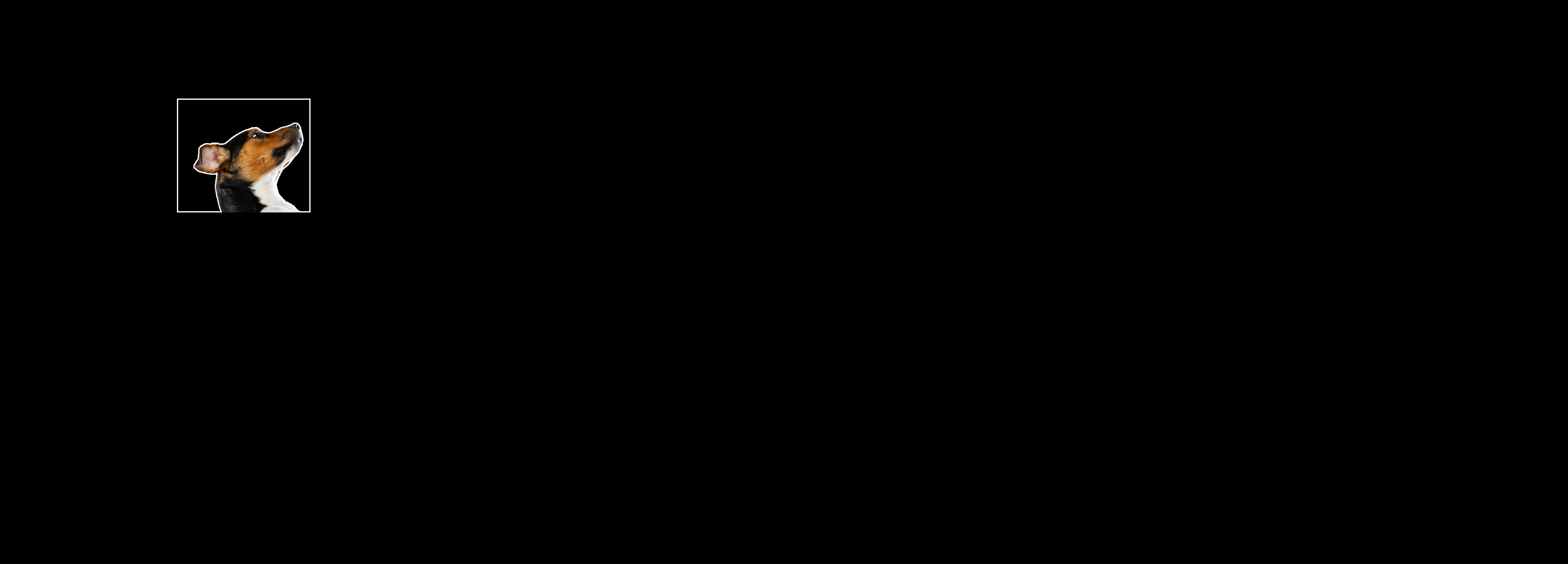
Although jumping is natural for dogs, it is essential to teach them not to jump on you or your guests. A dog jumping up can frighten people or even cause someone to fall or get injured. Jumping up is often rewarding for dogs, as mentioned above, due to the additional attention they receive, so teaching your dog not to jump on people is easiest to do by giving your dog an incompatible behaviour to perform. By throwing treats as described in Steps 1 – 5, you’re rewarding your dog for keeping his feet firmly on the floor. Over time your dog will offer this grounded stance automatically when he meets people.

DQ | 4B 19 DOG BEHAVIOUR
HIKING WITH YOUR DOG


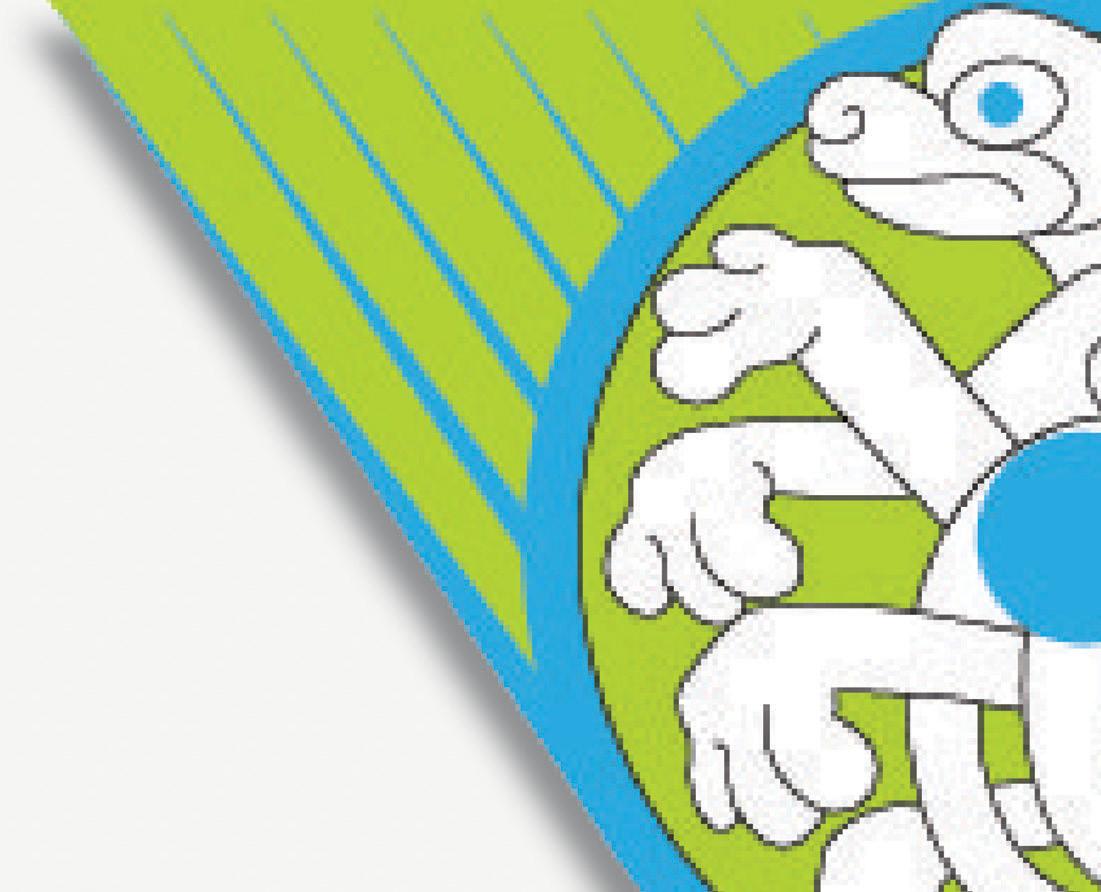

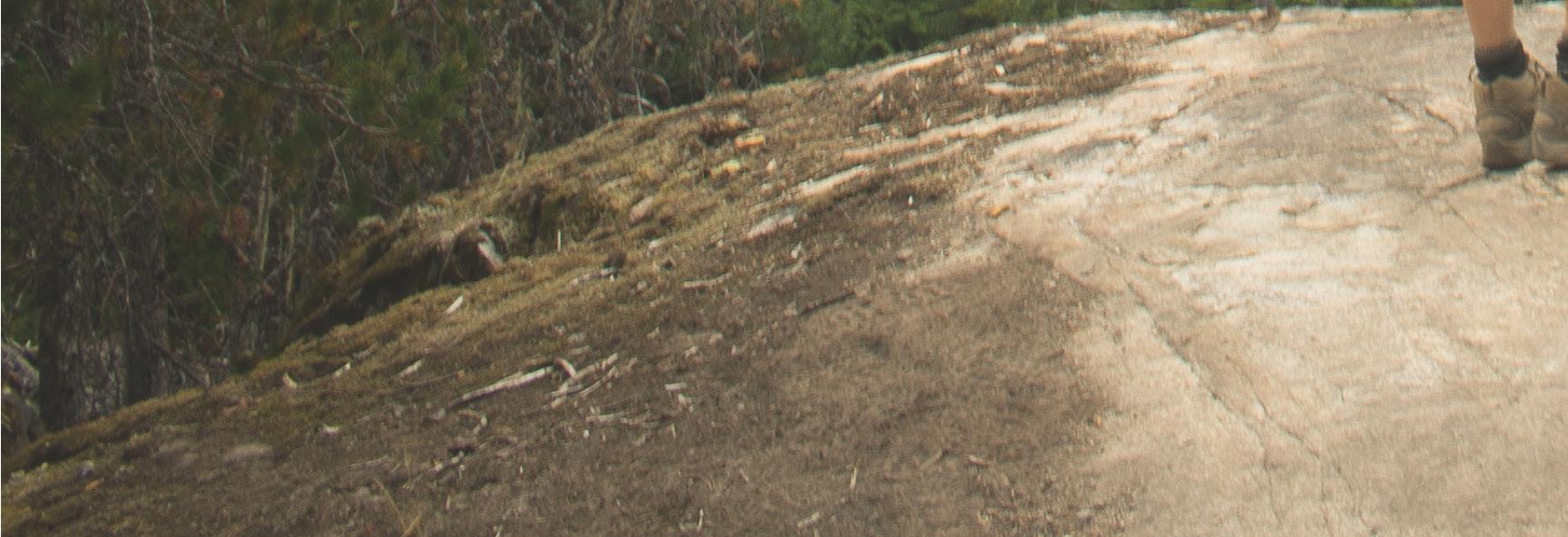

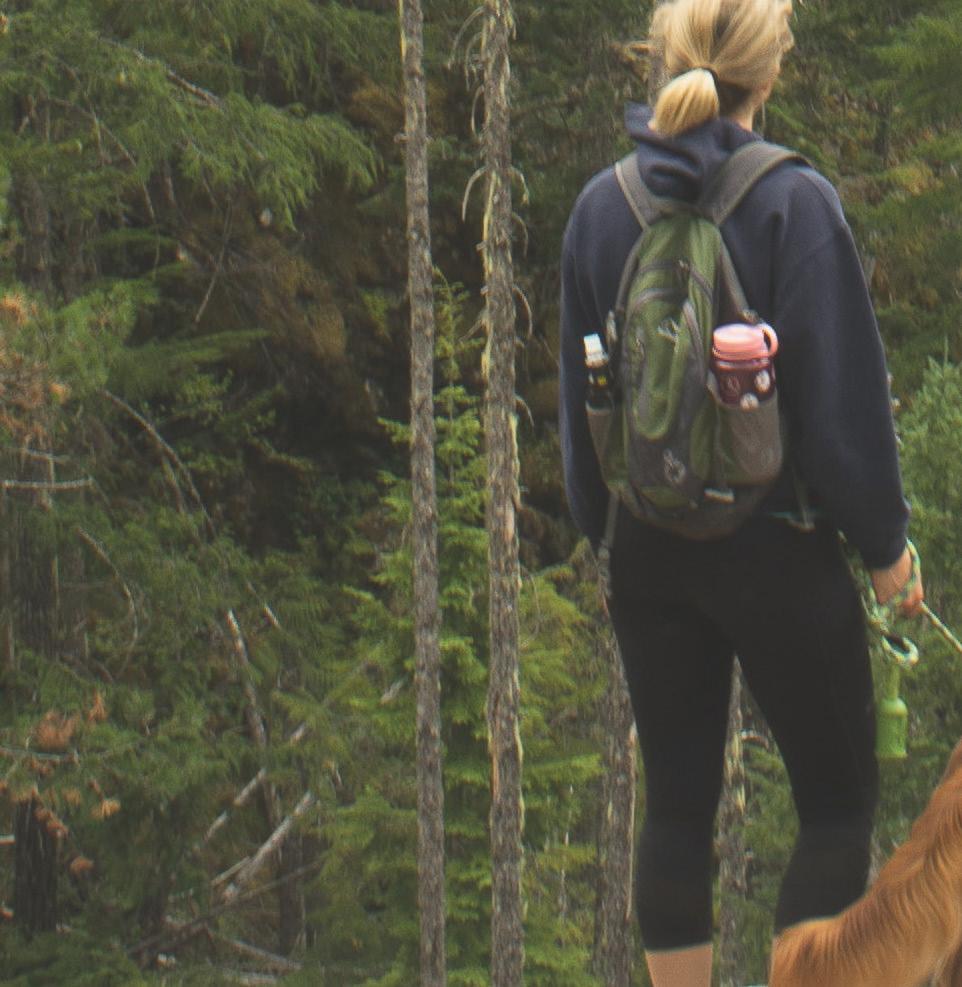



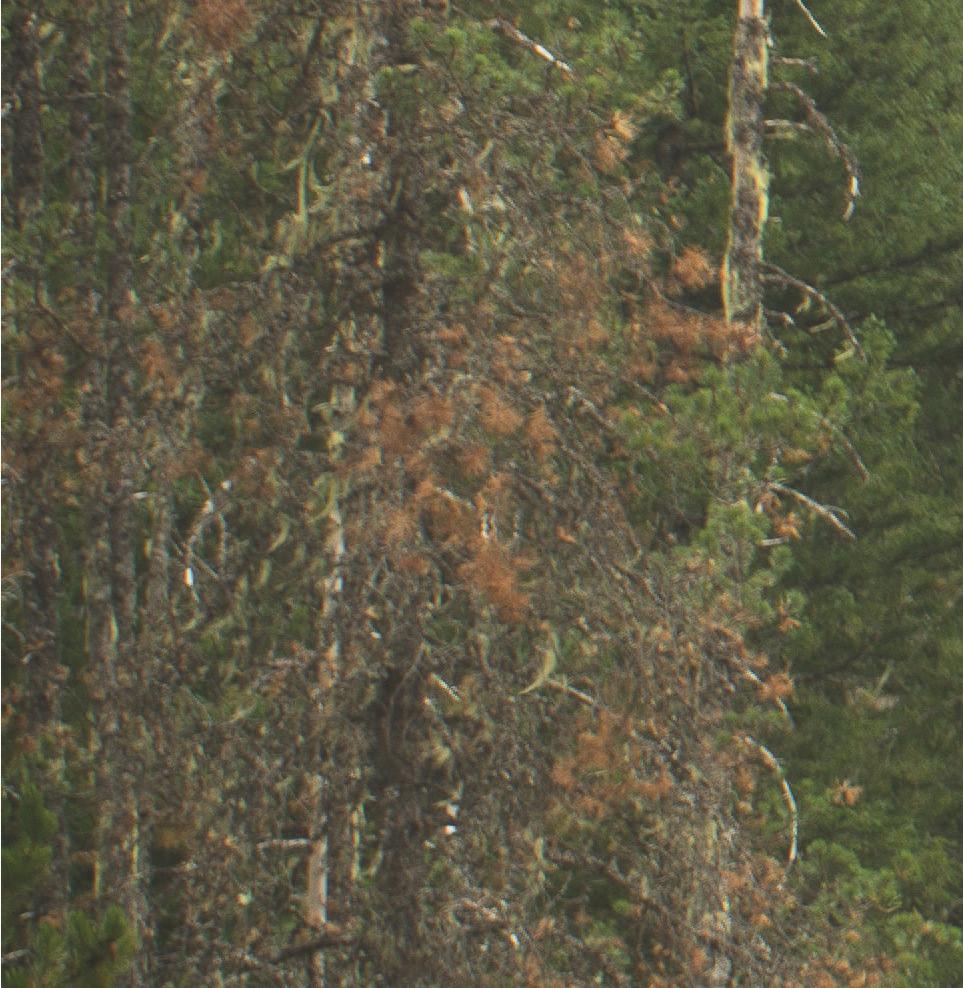





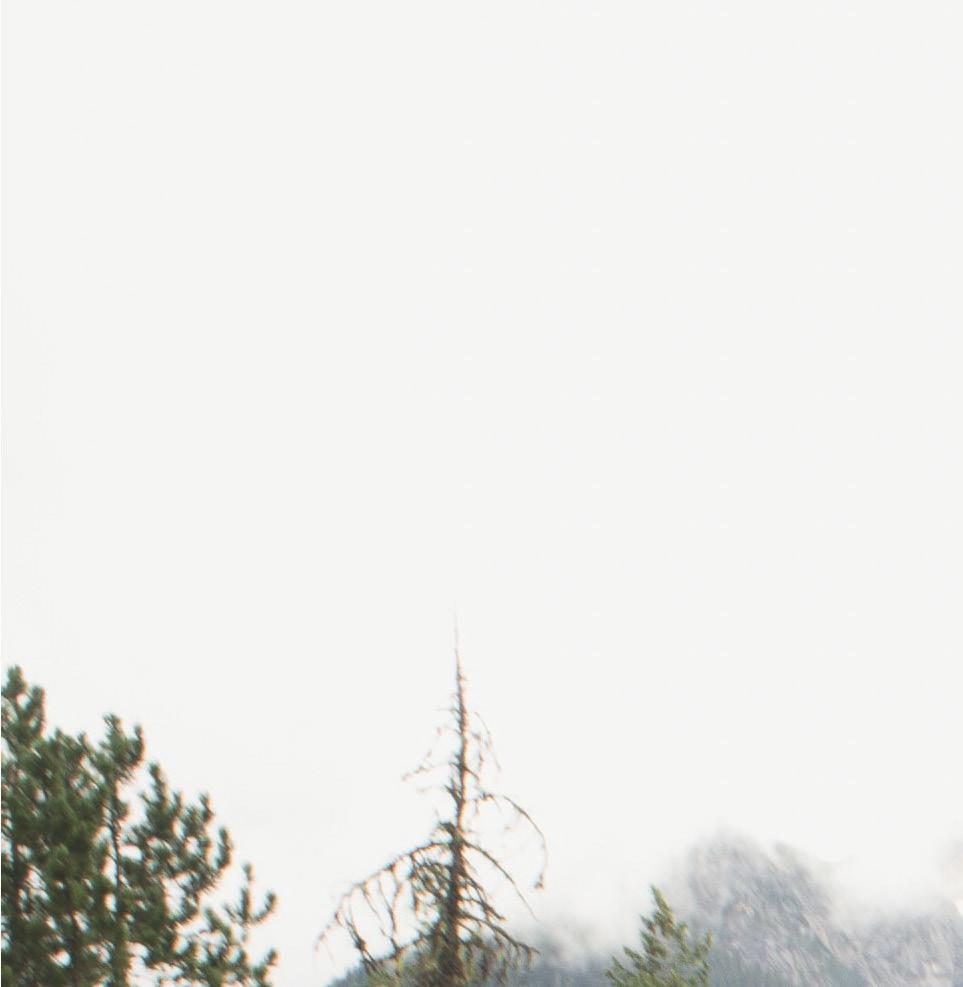
Having fun in the great outdoors
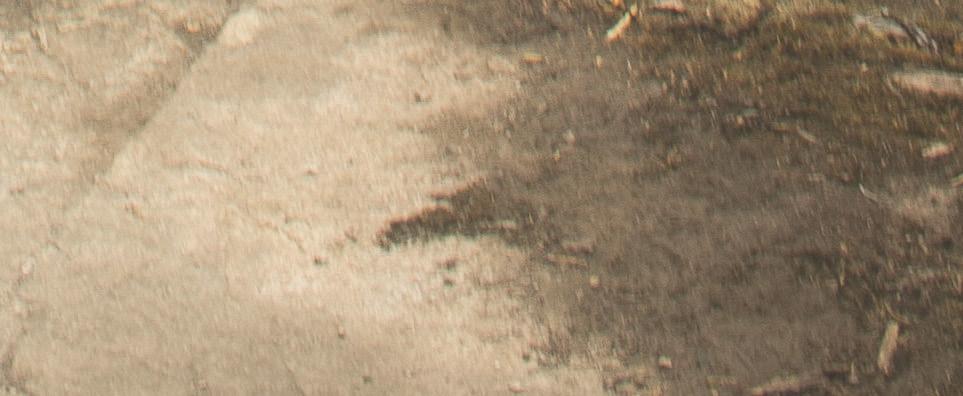
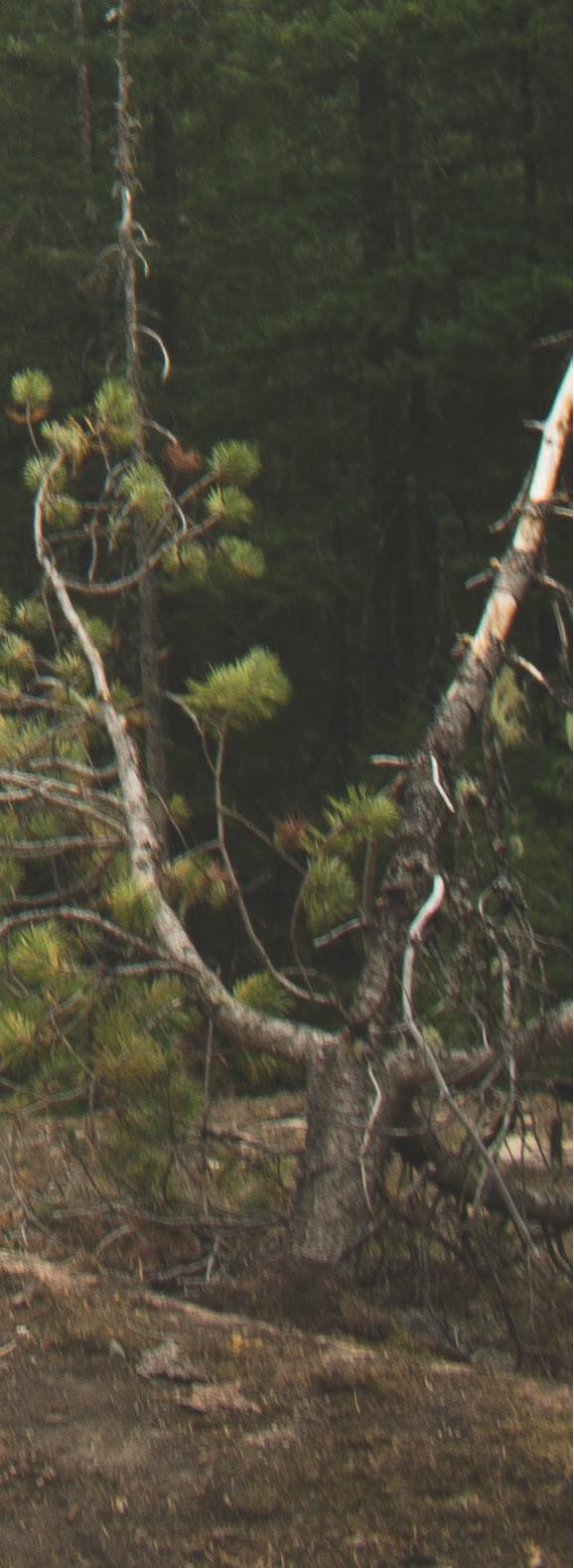 Text | Bianca Rootman
Text | Bianca Rootman



DQ | 4B 20
A new year means resolutions, most of which tend to have something to do with physical activity and spending more time in nature. Hiking is the perfect way to tackle both in one go and bring your dog along for the ride!

ABOUT HIKING WITH YOUR DOG

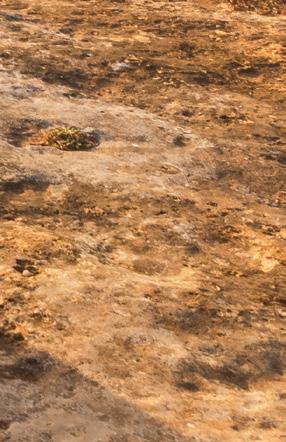
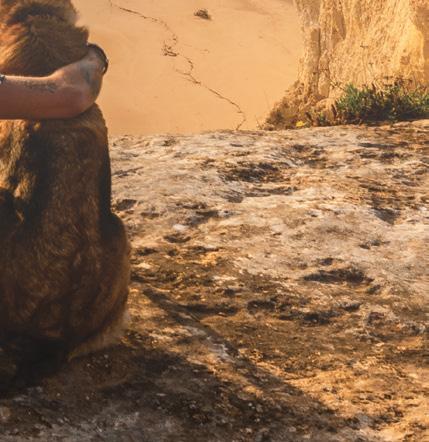










Not only is hiking physically good for us, but the mental benefits of being outdoors and in nature are endless. Being able to take our companions with us is an added bonus. To enjoy hiking with our hounds, however, we must make sure that our companions do not suffer from any physical condition that prevents them from being able to do this form of physical activity. Secondly, we need to make sure that hiking is an age-appropriate exercise for them, and thirdly, we need to establish that they are fit enough to handle the demands placed on them during a hike.
Here we look at some of the points to consider when thinking about going hiking with your pooch:
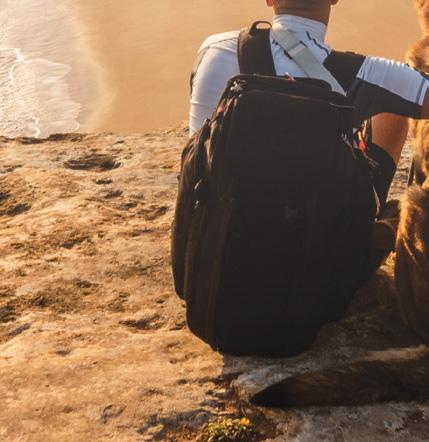



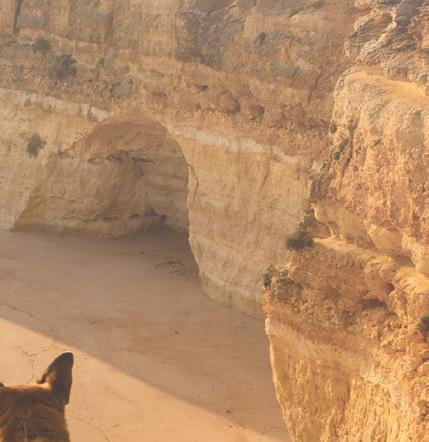




TIME OF DAY. Going for a hike in the heat of the day is already setting your day up for disaster. Instead, choose to go earlier in the morning or later in the afternoon. This decreases the chances of your companion overheating or burning their paws on hot rocks. Please also be very careful if your companion is a brachiocephalic (flat-faced) breed, as they can very easily overheat and suffer from respiratory distress. These breeds should never be walked far and only when it is cool or cold. They also need frequent rests to allow them to catch their breath.

DQ | 4B 21
TERRAIN. We need to remember that our companions may previously only have walked on tar or bricks, so they will need a chance to acclimatise to walking through long grass or deeper sand. Something as small and insignificant as this impacts how your companion moves and uses his/her body, and this kind of terrain will ask questions of parts of their bodies that they may not usually work. Think of how challenging it is to walk or run on the beach compared to walking or running on tar!

Then, asking your companion to walk on rocky ground is going to hurt and potentially damage their paws. The same goes for slippery or muddy terrain, as they are at risk of slipping or getting stuck and injuring themselves. Please also be aware of drops or ledges that your companion may not see and could fall off. Another danger to be aware of is loose rocks, which can fall on dogs, particularly if they are exploring.

DQ | 4B 22
GRADIENT. Be aware of inclines and declines whilst out on a hike. Both of these are good challenges for your companion, but the frequency and gradient should be gradually introduced and built on. Don’t start with steep uphills that exhaust your companion before they’ve had a chance to do anything else.
DISTANCE. This is an obvious one, and yet most people overdo it. Expecting your companion to start with a 5km hike when all they’ve previously done is walk 500m around the block or run around in your garden is the wrong way to go about hiking. Start with short walks around the block, add some ‘off road’ walks, then move to shorter hikes and build from there.
REST AND REHYDRATION. Make sure that you give your companion adequate rest and offer them water throughout the hike to ensure they are hydrated and have a chance to catch their breath.

DQ | 4B 23
ENVIRONMENTAL FACTORS.
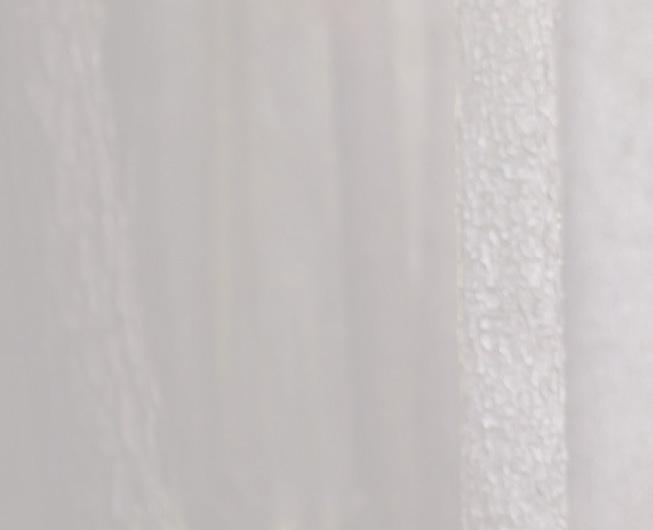
These factors come with being out in nature and are not always avoidable. They include things such as poisonous plants, snakes, scorpions etc. These can harm both you and your companion, so a basic understanding of first aid and what to do in an emergency is essential.

FREQUENCY AND INTENSITY.
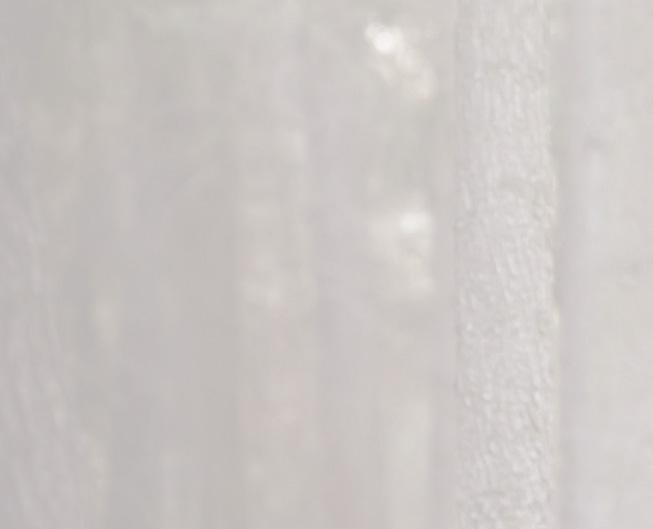
Like with any form of strenuous physical exercise, not doing some form of training and conditioning in preparation can lead to injury. Ensuring that your companion is fit and ready for a hike is probably the most important point in this article. Gradually build on distance and intensity, allowing your companion’s body a chance to get stronger by building the correct muscles needed to navigate the challenges they face on a hike. Putting your dog on a fitness and conditioning programme will ensure that he/ she is fit and strong enough to face the demands of a hike and that the risk of injury will be reduced. These programmes can be compiled for you by rehabilitation and fitness trainers.
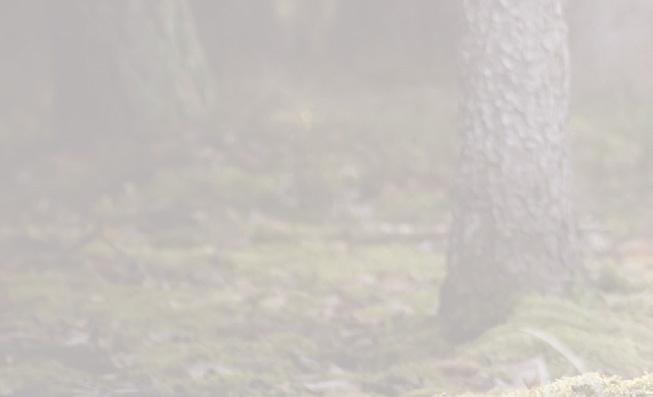

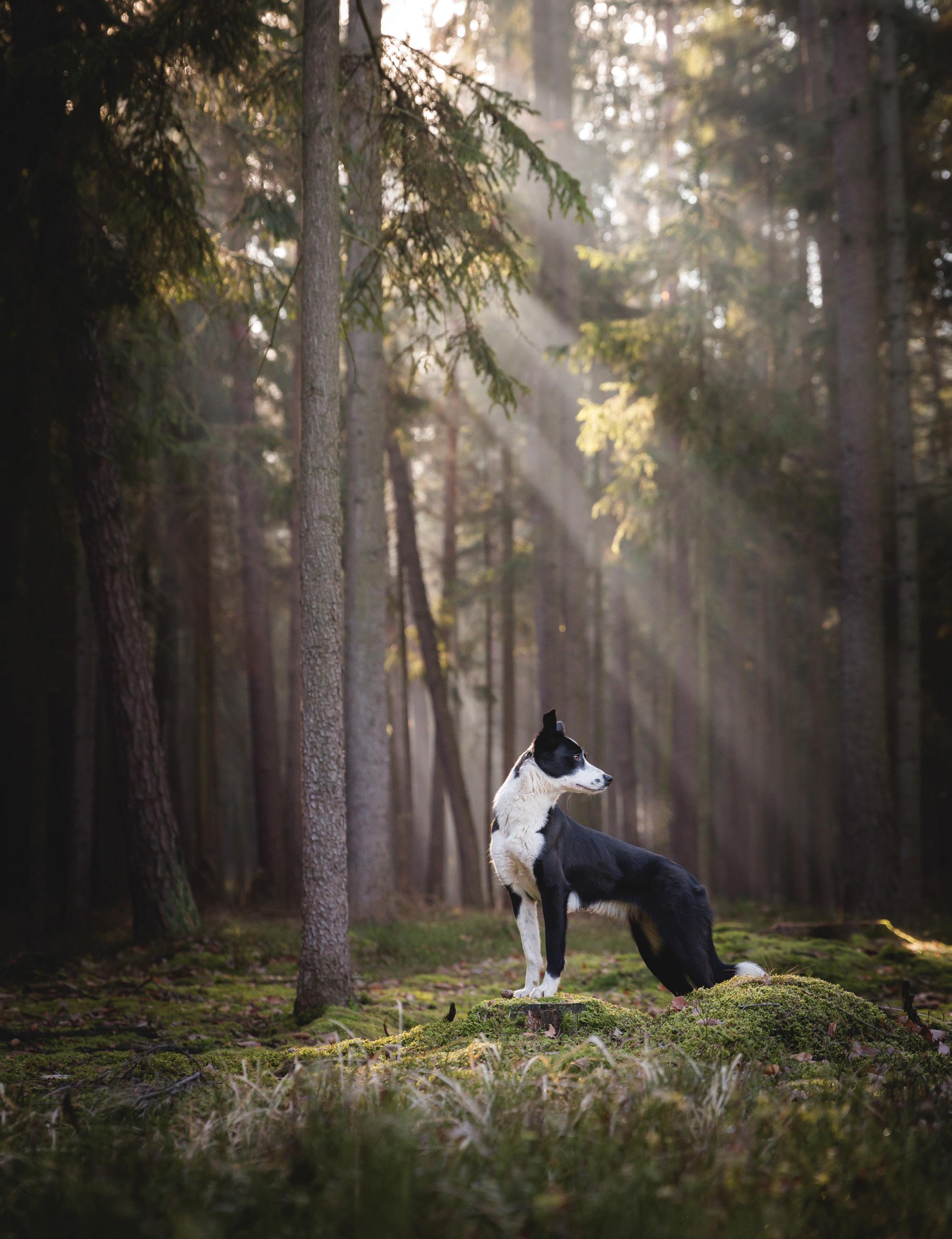
DQ | 4B 24
TAKE HOME MESSAGE



Hiking is a fantastic way to get out and have fun with your companion. Once your companion is fit and strong enough, you’ve found a great venue and prepared yourself for any challenges you may face, go out there, have fun and appreciate our beautiful country with your best friend by your side!

ANIMAL HEALTH AND HYDRO RYNFIELD 154 President Brand Str, Rynfield, Benoni Contact: 083 230 2188 Email: animalhealths@gmail.com ANIMAL HEALTH AND HYDRO PRETORIA EAST 218 Mark St, Grootfontein County Estates, Pretoria East, Grootfontein Country Estates Contact: 074 251 4410 Email: ahahpretoria@gmail.com
WARNING Young puppies and geriatric dogs should not be expected to go on any form of a hike as this will be too strenuous for their bodies.
DQ | 4B 25

DQ | 4B 26 GROOMING

DQ | 4B 27 GROOMING
HOME 101 EVERYTHING YOU NEED TO KNOW ABOUT GROOMING YOUR DOG AT HOME
grooming
TEXT: RHIANNON CECIL
There are many benefits to grooming your dog — it's a great way to make him look and feel good, and spending quality time together builds a solid bond and trust between you. It's also necessary to keep his skin and coat healthy, and his eyes, ears, teeth and nails will need attention too!
Perhaps your dog is frightened of the parlour, or he decided to take a delicious mud bath at an inconvenient time… No matter the reason, there will always be that odd occasion when you must bathe or groom him yourself. Not sure how to go about it? Read on to get some great tips on grooming your dog at home.
BRUSHING YOUR DOG
Depending on the type of coat your dog has, you should brush your dog at least once a week to remove tangles, knots and debris. Brushing is also great for stimulating blood flow in the skin. Even if you've never brushed a dog before, it's not too late to start!
When you're starting off, keep sessions gentle and limit them to once or twice a week until your dog is used to the idea. Treat him for good behaviour, like standing still while you brush. It's essential that he forms a positive association with grooming, or he'll run for the hills every time he gets a whiff of a brush.
Use a metal pin brush for long-haired dogs, as long as it goes through their hair easily. The metal pin brush will loosen and remove the majority of the dirt build-up and loose hair, as well as detangle knotted and matted sections. If the matts are stubborn or have been in his coat for an extended period, you may need to remove them. Ideally, use clippers instead of scissors. For short-haired dogs, you can use a curry comb or soft bristle brush. Always be gentle, and treat and praise obedience. Most dogs adore a good brush, provided the experience is a pleasant one. If your dog is not enjoying the experience, give him a break, have a play, and carry on a bit later. NOTE: Be especially gentle on his stomach, as this area is very sensitive.
TOP TIP! Remember to brush him before bathtime to remove excess dirt and debris in his coat.

DQ | 4B 28 GROOMING
BATHING YOUR DOG
Unless your dog revels in getting unexpectedly filthy, bathing is a lot less frequent than brushing. In most cases, four times a year with a specially formulated dog shampoo should be sufficient. If this is your first time bathing a dog, have plenty of towels handy. It could get messy.

The process can be tricky, as some dogs find it rather scary. If you're using a bath, ensure you put a rubberised mat inside to make your dog feel more secure and prevent him from slipping. If your dog is one of those challenging customers who thinks leaping out of the bath and spraying everything in his vicinity is fantastic fun, use a leash to secure him and help prevent any accidents.
Stick to a good quality dog shampoo, and avoid contact with his eyes and ears. A detachable shower head is ideal for baths, but a plastic cup will do the trick if you don't have one.
Start the process with a good brush, then wet your dog thoroughly, avoiding his face and ears. Once he's properly soaked through, apply the dog shampoo, starting at his neck, and working your way down to his tail. Massage the shampoo into his coat, and don't forget to wash his feet and tail. Once you are satisfied that most of him is clean, rinse him off with clean water, again being careful of his ears and eyes. Getting all the shampoo out is important, as shampoo residue can cause skin irritations. Rinse him a few more times than you think you need to just to be safe.
You can then use a damp cloth to clean his face. Wipe his nose, eyes, forehead and outer ear gently with warm water. Now for the drying part… Have a towel ready (seriously!) Once your dog realises bath time is over, he will want to shake all that water out of his coat. Ideally, throw the towel over his back and let him shake into the towel. Rub him down until you get most of the water out. You're going to
DQ | 4B 29 GROOMING
need a second dry towel to finish the job. If the weather is nice, you can take him outside and let him dry off in the sun, but have your wits about you. He might just head for the nearest sand patch and ruin all your efforts!
EARS, EYES, TEETH AND NAILS
It's essential to check your dog's eyes and ears regularly, and grooming is the perfect time to get it done.
FOR EARS
To check your dog's ears, look inside and give them a smell. Yes, we know it sounds odd, but if you smell anything unusual, it could be a sign of infection. Other common signs of ear infections include loss of balance, head shaking, droopy ears, painful ears, scratching the ears or walking in circles. If you find his ears are dirty, grab some ear-cleaning solution and a cotton ball to wipe them over. Never use earbuds, and don't clean too deep into the ear canal. It could be painful or, worse, cause serious damage.
FOR EYES
To clean your dog's eyes, simply wipe them with a damp cloth. Some breeds are prone to watering eyes, so use a special eye-cleaning solution to remove tear stains. While you're wiping, check if your dog's eyes are healthy. A healthy eye should be clear and free from irritation. Take the time to carefully trim the excess hair away from the eyes to prevent irritation!
FOR TEETH
Tartar and bacteria build-up can cause serious problems if left unattended. For this, clean your dog's teeth on a weekly basis. Start when he's a puppy, so he has plenty of time to get used to having your fingers in his mouth. If your dog's mouth is a no-go for you, turn to a canine tooth cleaning professional.
FOR NAILS
As a general rule, if you can hear your dog's nails tapping on the ground as he walks, he needs a pedicure. Use a canine nail clipper only to keep your dog's nails neat and trimmed. Unkempt nails may curl under his feet or twist his toes, causing joint damage and other complications. Be careful not to clip too short, as you might cut the quick, which will be painful, to say the least.
If you do accidentally clip the quick, calm him down as rapidly as you can and use styptic powder corn starch to stop the bleeding. If your dog has long nails, clip them in stages. Don't try to clip the whole nail at once, as the quick can extend over time and you risk hitting it.

DQ | 4B 30
GROOMING
CUTTING, SHAVING AND CLIPPING YOUR DOG
Home trimming isn't recommended, especially if you're a first-timer. Aside from giving your dog the worst haircut of all time, a lot can go wrong, and this is best left to the professionals. One slip can land you explaining yourself at the vet's clinic.
If you're brave enough to try and trim your dog at home, here are a few things to keep in mind:
· Ensure your pooch is completely dry before trimming.
· Secure your dog to a grooming table in a quiet place, and don't leave him unattended.

· Only use specialised grooming scissors. They have rounded tips to prevent stabbing and accidental cutting.
· Trim the hair around the face, neck, hocks, toes and tail with scissors, and use clippers for his body (not your husband's beard trimmer).
· Ensure the clippers are sharp.
· Keep the clippers close to the body and away from skin folds.
· Check the clipping blade for heat regularly.
· Know where the edges of the ears are when trimming them.
· If you feel unsure about the process, it is best to leave it up to the professionals.
NOTE: Short-haired dogs do not need to be clipped
GET STARTED!
Keep this guide handy, and you will have a wellmaintained handsome and happy pup who sheds very little and smells great. It may seem like a daunting task, but it becomes more manageable if you break it up into bite-sized chunks. Plus, the extra bonding time will make him love and trust you just that little bit more. Now, go grab that brush and happy grooming!
DQ | 4B
GROOMING
FAKE

DQ | 4B 32
NEWS?
DOG HEALTH
IS THAT LOOKING AT SOME OF THE MYTHS AND MISCONCEPTIONS IN CANINE NUTRITION
There is so much misinformation in the world generally, but some fields do seem rifer with it than others, and one of those is the field of canine nutrition. While it is now possible to research any area of our pet's health online, one of the problems is that it is not always apparent which pieces of information are credible and which are not. Not all misinformation is harmful, but even in these more innocuous situations, it is best to know the truth.
Here we look at some of the most common myths and misconceptions in the canine nutrition world and see how much truth they actually contain.

DQ | 4B 33
MYTH #1: SHARING LEFTOVERS IS KIND
It is often difficult to resist 'puppy dog' eyes staring up at us as we eat our food, and it can be tempting to give dogs extras from our plate, but we are not kind by handing human food to our dogs – and in some cases, we may, in fact, be causing harm. Firstly, obesity is a very real problem in our dogs, and giving them rich food from our plates certainly does not help keep your dog lean and healthy. And, even if your dog is a slender character, a lot of the food we give to him from our plates has little to no nutritional value to him, so it really is 'wasted calories' that could be 'spent' on something with health benefits for your pooch. Of course, though, the major risk with feeding dogs from our plate is the chance that we mistakenly feed them something toxic or poisonous. Whilst most of us know the foods to avoid with our dogs, it is easy to make mistakes or forget that something contains a toxic sweetener, so generally speaking, we advise against feeding dogs human food.

MYTH #2: DOGS NEED MILK
Many dogs will happily lap up a bowl of milk if it is given to them, but feeding milk to our dogs is not necessary. Yes, it is an excellent source of calcium, but after eight weeks of age, dogs produce much less of the enzyme lactase needed to digest the lactose in milk. This can, in some cases, make the dog lactose intolerant and feeding these dogs with milk could cause a stomach upset and diarrhoea. The good news is that cheese and yoghurt are also good sources of calcium but are relatively low in lactose and can be readily tolerated by most dogs! Just watch out for any artificial sweeteners, particularly in yoghurt, as these can be toxic for our dogs.
DQ | 4B 34
DOG HEALTH
MYTH #3:
FROZEN DOG FOOD IS NOT AS GOOD AS FRESH
There are some excellent fresh dog foods on the market, which can be ordered online and delivered to your home frozen. Some people think that frozen doesn't mean fresh, but as these foods are frozen as soon as they are prepared, all the nutrients are retained. This also means that manufacturers do not have to include lots of additives to prolong the shelf life of the food. Basically, frozen may even be the best option!

MYTH #4: RAW FEEDING IS BY FAR THE BEST WAY TO FEED YOUR DOG
Proponents of raw feeding say it is more nutritious and has superior health benefits compared to other forms of feeding, but those against it have concerns over the risk of microbial contamination and whether it is nutritionally balanced. Many raw food companies produce food according to strict guidelines, and much research has shown that raw food is nutritionally balanced and meets the needs of dogs when formulated properly. However, there has yet to be a study proving that one feeding method is better than another.
DQ | 4B 35
MYTH #5: DOGS CAN EXIST ON MEAT ALONE
There is a belief among some dog owners that dogs can survive on a meat-only diet. Whilst meat and poultry are excellent sources of high-quality protein, they do not on their own provide enough essential vitamins and minerals to keep your dog in optimum health. In 2013 a study published in Nature showed that dogs had much higher levels of amylase, the enzyme needed to digest starch (carbohydrate), than, for example, wolves. Compared to obligate carnivores like cats, it was also seen that dogs have lower requirements for protein and can use vitamins A and D from plants just like humans can. When these facts are considered together, it suggests that dogs are more accurately classified as omnivores than carnivores.
MYTH #6:
HOME-COOKED FOOD IS BETTER FOR DOGS THAN COMMERCIALLY PREPARED FOOD

There is no evidence to support the belief that homeprepared diets are healthier than commercial diets. In fact, a home-cooked diet that is not nutritionally balanced may cause harm to health. Good quality commercial feeds have to ensure they meet requirements for all nutrients, whereas studies have shown that home-cooked diets are often deficient in one or two nutrients. Nutritional deficiencies only become apparent over time, and once signs of clinical deficiency appear they are difficult to reverse. This is not to say that we shouldn't cook our
TOP TIP
If preparing your dog's food at home, look for recipes that advise on exact amounts of ingredients with added vitamins and minerals. Avoid those not containing vitamin and mineral supplements, and beware of those that interchange different ingredients. For example, if a recipe states you can use 100g of beef, chicken or lamb, you need to think carefully about whether you use this recipe or not. There is a huge difference in the nutritional composition of each of these meats, so depending on which you choose, the overall nutritional composition of the finished meal will be vastly different.
dog's food at home, just that we need to be careful and plan wisely to ensure all needs are met.
MYTH #7: AVOID DOG FOOD WHICH CONTAINS BY-PRODUCTS
The term by-product refers to any leftovers once muscle meat has been removed, and therefore, not all products referred to as by-products are of poor nutritional quality. Organ meats can be excellent additions to the diet as they are often richer in nutrients than muscle meats. Reassuringly, in legal terms, the term 'by-product' excludes undesirable items such as hair and feathers. Still, we should take care to use only those manufacturers who state exactly what they mean by by-products.
DQ | 4B 36
DOG HEALTH
NOTE
We would advise against feeding home-cooked diets for growing puppies. A commercially prepared diet formulated to support their growth needs is preferable as this is the most nutritionally demanding time in the dog's life.
MYTH #8: EATING POO IS CAUSED BY NUTRITIONAL DEFICIENCIES
Contrary to popular belief, dogs are not attempting to redress a nutritional imbalance by eating poo. It would seem that it's not because their diet is lacking in any way –it is simply that they are inherent scavengers, and this can form part of their scavenging behaviour. Gross!
TAKE HOME MESSAGE
There are many myths and misconceptions surrounding canine nutrition, and sometimes the sheer volume of information out there can feel overwhelming. We hope this article clarifies the more common issues, but if you still have queries, write to lizzie@dqmagazine.co.za and we'll do the fact-finding and put the answer in the next edition!


DQ | 4B 37
TOP
5 HE RBS
TO GROW IN YOUR DOG’S GARDEN
Adding fresh homegrown herbs to your dog’s meals can provide many benefits. Herbs offer phytonutrients and fibre, benefit gut bacteria, add moisture to the diet of dogs fed dried food and may even possess medicinal properties.
If you can pick up a few herbs and then immediately prepare them and add them to your dog’s food, the nutritional benefits will be at their peak. When fed like this, even a little goes a long way.
The herbs and plants mentioned here can be bought as young plants, sowed as seeds or foraged for in the great outdoors, and even a sunny window or balcony can be used to grow a few herbs, so don’t be put off if you don’t have a garden. These plants just need a little well-drained soil, water, some sun and a bit of care to give you a tremendous amount in return.
DQ | 4B 38
HERB 2: NETTLE
Nettles are rich in iron, vitamins A, C, D and B complex, silica, calcium, phosphorus, magnesium, beta-carotene and potassium. Nettles are believed to work as antihistamines, to improve anaemia, to relieve urinary retention and to provide relief for dogs who itch.

Only the tops of nettles should be picked, and only when they are young, as mature nettles can irritate the urinary tract and have a bitter taste. Nettle seeds can also be harvested, and these provide a significant boost to the adrenals. It goes without saying that nettles will need to be picked using gloves, but the process of drying and cooking them does neutralise their sting. Picked nettles can be dried for a couple of days on paper in the sun or hung upside down in small bundles. Once dried, you can crumble the nettle leaves easily.
HERB 1: PARSLEY
If you only have space for one herb, parsley is it. Apart from being cheap to purchase, easy to grow and great for jazzing up your cookery, it has a vast array of nutritional benefits.
The most common varieties of parsley are curly and flat-leaf parsley, and the leaf, stem and root can all be used. The flatleaf parsley is more closely related to wild parsley.

Parsley traditionally supports digestive and urinary tract issues and makes a great breath freshener. It is high in antioxidants such as beta-carotene and lycopene, which help fight inflammation and are used to support arthritic conditions.
Parsley is also rich in vitamins A, C, B1, B2, and K, calcium, riboflavin, potassium, iron, magnesium, manganese, niacin, phosphorus, fibre and chlorophyll.
To prepare parsley for your dog, finely chop the leaves and add them into a blender with your dog’s normal vegetables. Big dogs can probably handle a tablespoon of parsley daily, but this is just a rough guide, and you should increase the amount given gradually.
DQ | 4B 39 DOG HEALTH
given to improve digestion, ease bloating, aid with reflux and cure mild tummy aches. It is, however, also said to be beneficial for vision, the immune system and bones.
HERB 4: DANDELION

Dandelions are a great addition to your dog’s diet. The leaves are rich sources of vitamins A, D, K, and B complex, iron, manganese, phosphorus and potassium. The flowers are a good source of lecithin and antioxidants. The leaf is said to be beneficial for the liver, gall bladder and kidneys and acts as an anti-inflammatory and antimicrobial. It is also believed to be beneficial in diabetes.
As dandelions have a bitter taste, adding them to a dog’s vegetable blend is advised rather than feeding them alone. The best ingredients to blend them with, and disguise the taste, are parsley, courgette, chard and a few lettuce leaves.

DQ | 4B 40 DOG HEALTH
HERB 5: THYME

Thyme has expectorant qualities to help soothe a cough or cold by loosening mucus and helps to manage bad breath. It also has antimicrobial qualities, meaning it helps your dog to fight bacterial, viral or fungal infections.
Thyme has a strong flavour and aroma, so you want to use it pretty sparingly with your dog. You should introduce it in little amounts to see if your dog likes the taste. Alternatively, you can crush a few leaves and see if they enjoy the scent. The stems are generally woody, so rather focus on picking off a few leaves for your dog.
A WORD OF CAUTION
When harvesting any herb or vegetable, there are a few things to bear in mind so you can use them safely. Firstly, you must know exactly what you are picking. This takes time to learn. If you have any doubts, don’t use it! Secondly, if you are going to forage, ensure the area you are in has not been sprayed with pesticides or other chemicals. Thirdly, some dogs will have allergies to these herbs or simply be intolerant to them. This means you need to introduce them slowly and watch out for any unusual reactions.
TAKE HOME MESSAGE
Herbs can be a great addition to your dog’s diet and bring with them many health benefits. However, if you are concerned about a specific issue with your dog, these herbs are not a substitute for a vet visit and a full investigation of the problem.

DQ | 4B 41
DOG HEALTH

stressed IS MY DOG IDENTIFYING SIGNS OF STRESS IN YOUR CANINE COMPANION DQ | 4B 42 DOG HEALTH
It's (hopefully) well known by now that dogs can experience stress, and whilst stress in dogs is not identical to that experienced in humans, we can certainly empathise with their situation enough to want to help them relieve it. The tricky part is that the signs of stress in dogs are often quite subtle - dogs don't slam down the phone, cry uncontrollably or lose it with their boss – and sometimes stress behaviours in dogs can even mimic normal behaviours.
INDICATORS OF STRESS IN DOGS

In order to differentiate signs of stress from normal behaviours, you will need to know your dog's regular demeanour. When relaxed, your dog should have semierect or forward-facing ears, a soft mouth and round eyes. His weight will be distributed on all four paws. If you learn to recognise his 'unstressed normal', you will more easily spot changes that occur during stress. Some of the most common behaviours you may encounter when your dog is stressed include:
SHAKING
Shaking off after a bath is completely normal behaviour, but shaking off after a stressful situation shows that your dog was experiencing or is still experiencing stress that he is trying to alleviate.

DQ | 4B 43 DOG HEALTH
PACING
Dogs, just like people, pace when they feel agitated. Some dogs will repeatedly walk in the same pattern around the room or garden when feeling anxious.
WHINING OR BARKING
Vocalising is everyday selfexpression in dogs but may intensify when stressed. Fearful or tense dogs may whine or bark to get your attention or self-soothe.

CHANGE IN TAIL POSITION
When scared, dogs often tightly tuck their tails.

DQ | 4B 44 DOG HEALTH

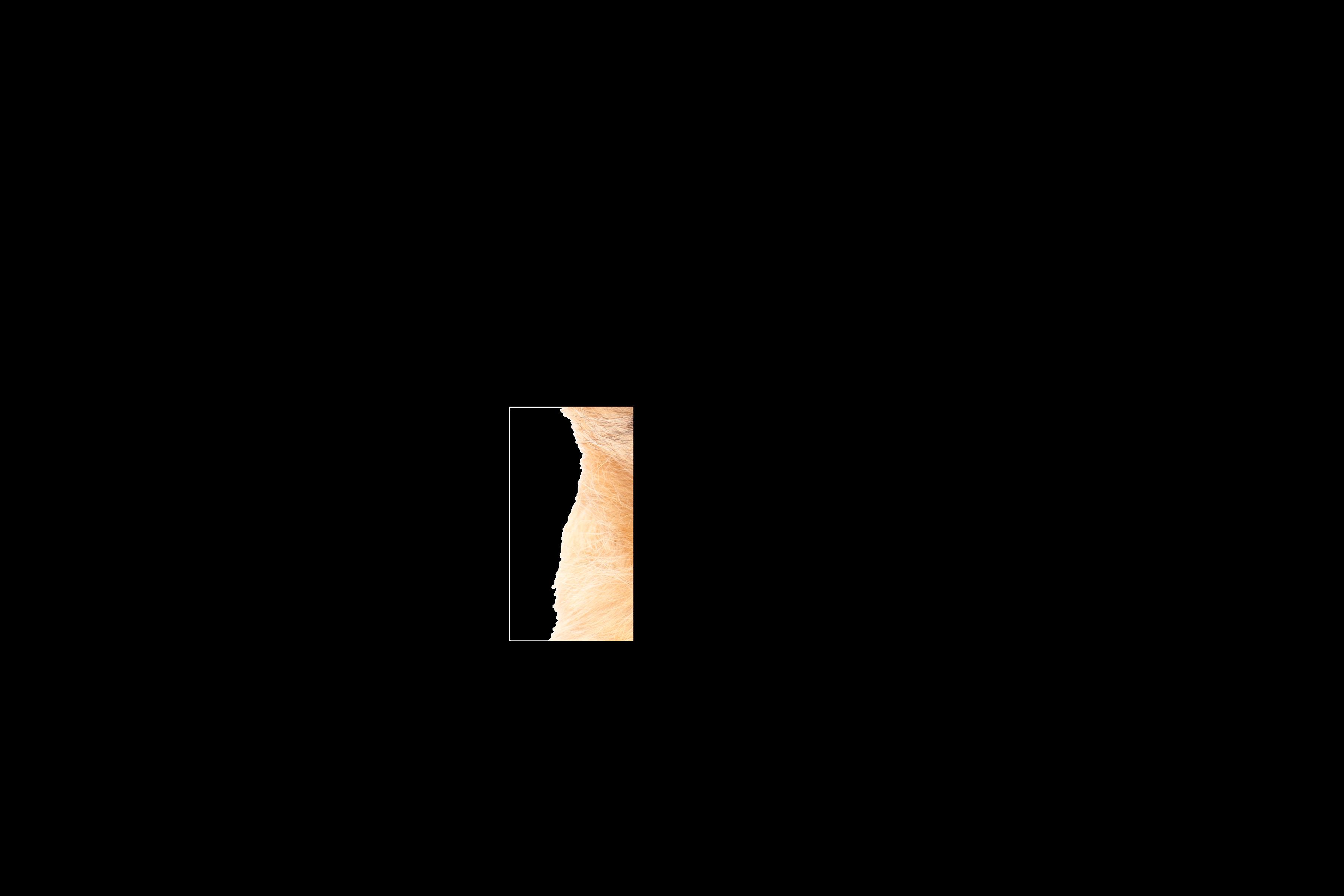
DQ | 4B 45 DOG HEALTH
DROOLING AND LICKING
Dogs may drool and lick excessively when they are nervous.


PANTING
Dogs pant when hot, excited or stressed. If your dog is panting even though he has not exercised, he may be experiencing stress.
DQ | 4B 46 DOG HEALTH
CHANGES IN BODY POSTURE
Dogs usually bear weight evenly on all four legs. If a healthy dog with no known skeletal problems shifts his weight to his hind legs or cowers, he may be showing stress.


AVOIDANCE OR DISPLACEMENT BEHAVIOUR
When faced with an unwelcome situation, dogs may 'escape' by focusing on something else. They may sniff the ground, lick their genitals or simply turn away. Sometimes, as a means of escape, they will engage in diversion activities such as digging or circling.

DQ | 4B 47 DOG HEALTH
HIDING OR ESCAPE BEHAVIOUR
An extension of avoidance, some tense dogs literally move behind their owners to hide. They may even nudge their owners to keep moving away from the scary object or situation. When out and about, dogs may hide behind trees or parked cars.

DQ | 4B 48
DOG HEALTH
CHANGE IN EYE APPEARANCE
Stressed dogs have dilated pupils and blink rapidly. They may open their eyes wide and show more of the white of their eye than usual, causing them to appear shocked.


CHANGE IN EAR POSITION
Stressed dogs often pin their ears back against their head.
DQ | 4B 49 DOG HEALTH
CHANGES IN BODILY FUNCTIONS
Like people, nervous dogs can feel a sudden urge to go to the bathroom. When your dog urinates shortly after meeting a new canine friend, he may be marking territory and reacting to the stress simultaneously. Refusal of food and a loss of bowel control are also stress indicators.

DQ | 4B 50 DOG HEALTH
SHEDDING
Shedding of the coat often occurs when a dog is anxious.
HELPING YOUR DOG TO HANDLE STRESS
If your dog is stressed, the first thing to do is remove him from the stressor. Ideally, you want to find a quiet place for him to settle. Try not to comfort him too much, as this can cause him to become even more overstimulated. However, if you feel you want to pet him or give him treats, ask him to perform an activity, like sitting, for the treat, as this will help distract him from the stress and give him a sense of normality.
If, on the other hand, your dog is consistently stressed, you should speak to your vet. After ensuring that your dog's behaviour does not have a medical cause, your vet may give you some suggested activities, refer you to a behaviourist or even prescribe anxiety-reducing medications. These generally anxious dogs can also benefit from regular exercise and having a safe place in the home to retreat to when life becomes too much.
FINAL THOUGHTS
Stress is not always bad and sometimes helps to keep our dogs safe from danger. Yet, when it occurs in response to more innocuous stimuli or occurs very frequently, we need to find ways to help our dogs to handle stress and live happy and calm lives!

DQ | 4B 51 DOG HEALTH

DQ | 4B 52 DOG HEALTH
TEXT: RHIANNON CECIL
ELDERLY DOGS
EVERYTHING YOU NEED TO KNOW ABOUT CARING FOR YOUR CANINE SENIOR CITIZEN

Getting old is a fact of life. We must all face it one day, and the only sad part of having dogs in our lives is that old age comes faster for them. One day, the pup you brought home starts to grey around the muzzle, and his movements aren't as fluid as they used to be. Your once energetic and bushy tailed companion may have decided to take his life a bit slower. But there's no need to worry too much - chances are, he's still got a lot of bark left in him.
Having said this, everything will change for your best pal once old age sets in, and you'll need to make necessary home adjustments to accommodate an older dog. He is a senior citizen now and deserves the respect that comes with the title.
HOW DO DOGS AGE?
Dogs age significantly faster than humans. Depending on their breed, they can live beyond 16 with the proper care.
As a rule of thumb, smaller breeds of dogs live longer than their larger counterparts. You can calculate a rough estimate for your dog breed with the following:
• Small breeds: Add six years for every one human year.
• Medium and large breeds: Add seven years for every one human year.
• Giant breeds: Add eight years for every one human year.
MAKING CHANGES TO ACCOMMODATE AN OLDER DOG
There are several changes you can make to accommodate your dog’s new needs. Firstly, as your canine friend ages, he may not want to partake in the exuberant activities he enjoyed in his youth. You may just need to adjust your expectations and look for other ways to have fun together! They do exist – we promise!
Then, we need to remember that all dogs, but particularly older dogs, thrive on routine, and while you can teach an old dog new tricks, you may find he struggles to learn new things as he gets older. He may become totally opposed to any changes in his routine or surroundings, as he takes comfort in knowing when things happen and where everything is. Any change can cause stress and anxiety. Even minor changes, like moving the furniture, can disorient him, so take the time to keep him calm and make him feel safe if you have to change his routine or surroundings.
Finally, big changes like moving house or putting him in a boarding kennel can become risky as he ages, as he will be more susceptible to stress and anxiety. Whenever you can, prioritise your dog's mental health, and consult your vet if you have to make any major changes to his lifestyle.
DQ | 4B 53
DOG HEALTH
DOG HEALTH
WHAT TO EXPECT AS YOUR DOG GETS OLDER

Ageing is a slow and gradual process. You may not notice the signs at first, but the initial subtle signs of old age can be as simple as slower movements and less acute hearing and eyesight. Look out for these small changes as your dog ages, so you can monitor his progress and make adjustments to ensure a comfortable 'retirement.' Consider regular veterinary check-ups to rule out health complications.
Here are some of the more common changes and how you can manage them:
ENERGY
You can expect a dip in energy levels as your dog ages. Expect him to sleep more than he used to and to struggle to cope with too much exercise. Adjust your expectations and keep exercise sessions short.
INCONTINENCE
Incontinence is another common challenge with older dogs. You may find your dog starts to leave unexpected messes in the house. His bladder could be weaker, and he may try to get outside but not make it in time. Try and guide him outside periodically to help him overcome this challenge.
WEIGHT GAIN
Ageing dogs are prone to weight gain. Monitor your dog's weight carefully and consider putting him on an ageappropriate diet to avoid further health complications. Regular exercise is vital to maintain his weight and benefit his overall health, but be reasonable in your expectations and set realistic goals regarding what he can achieve at his age. Further complications, like hip dysplasia and arthritis, can also affect his exercise regime. Again, chat with your vet if you have concerns, as they can guide you with an appropriate programme that suits his capabilities.
DQ | 4B 54
EYESIGHT
Loss of eyesight is another challenge to be aware of. If your dog starts to struggle, you may have to guide him around the house and help him get outside. Be vigilant, consider his needs and use voice commands or a leash to show him where he needs to go.
Try and keep furniture arrangements and food and water bowls in the same place and cover your swimming pool securely to avoid tragedy. Eyesight challenges are typically worse after dark, so consider placing night lights in areas he needs to navigate frequently, like food and water stations.
Another consideration with loss of sight is that he might get lost and disorientated and wander off in search of safety. He can't see where he is, which can become stressful for him. Try and keep him inside or in a fenced-off area, and take him out frequently for walks, pitstops and playtime. Ensure he has no access to roads and other hightraffic areas.
HEARING
Hearing loss is very common in elderly dogs, and you'll often notice a lack of responsiveness as they get on in years. Common occurrences, like cars coming up behind them, could become genuine risks if their senses are impaired. Stay vigilant, and keep your older dog away from the driveway when cars come in and out.

Although your dog may not be able to follow your verbal
commands anymore, you should be able to communicate using hand gestures. Your dog will adjust naturally and look for hand gestures, as they are often more efficient forms of communication anyway. The challenge will be getting his attention in the first place.
It may take some time for you to adjust to hearing loss. Be careful not to creep up on your dog, wake him up suddenly, or snap him out of a daydream he wasn't ready to leave behind, as this risks a display of defensive behaviour.
SAYING GOODBYE
Our pets are an integral part of our everyday lives, and once you have had a dog, it's hard to imagine life without them. In many cases, it's up to you to decide the right time to say goodbye. Dogs give us so much, and the least we can do is provide them with dignity in their final moments. You'll know when the time is right and that the best thing you can do for them is say goodbye.
Many vets speak about the importance of being with your dog in his final moments. Although it's heartbreaking for us and undoubtedly the most challenging part of owning a dog, that final piece of comfort you offer them is priceless.
Older dogs are so special, and taking the time to make their old age pleasant and comfortable is the least we can do after the unconditional love they show us. If you have an older dog, think about how much you've done for one another, love him and remember, all dogs go to heaven.
DQ | 4B 55 DOG HEALTH
butt
THE OF THE JOKE

DQ | 4B 56 DOG HEALTH
WHAT YOU NEED TO KNOW ABOUT ANAL GLANDS
Anal glands, otherwise known as anal sacks, are small paired pouches located between the internal and external anal sphincter muscles. They are positioned one on each side of the anus at roughly the 4 and 8 o’clock positions. These glands secrete an oily, brownish substance that has a strong odour. Liquid held in the sac is usually expelled when a dog defecates, but if this emptying does not occur, the material inside thickens and becomes more difficult to pass. This is when you might see your dog scooting his bum along the ground or licking his anal area. If the anal glands are not emptied, they can become impacted, and an abscess can form, which then bursts through the skin, leaving a smell, bloody, painful mess. This may be a once-off occurrence, such as during an episode of loose stools or a recurring issue.

DQ | 4B 57 DOG HEALTH
CAUSES OF ANAL GLAND PROBLEMS
• Obesity. Obese dogs seem to have more trouble with their anal glands than slimmer individuals, probably because the extra body fat in the anal region lessens the pressure that passing faeces apply to the glands to empty them.
• Breed. Anal gland impactions are more often diagnosed in small breeds like Toy and Miniature Poodles and Chihuahuas. Basset Hounds and Beagles are also regularly affected. Dogs of any age or sex can be affected.
• Gastrointestinal diseases. Food allergies, inflammatory bowel disease and other gastrointestinal conditions can cause concomitant anal gland issues because the anal sacs usually only empty when they get firm pressure from a solid bowel movement. Dogs with gastrointestinal diseases often have soft or unformed stools that do not adequately stimulate the glands to empty, causing fluid to build up.
• Diet. While a change in diet alone won’t resolve a significant anal gland issue once it has developed, feeding a diet rich in fibre may help prevent future episodes. The pressure of the firm, bulky stool against the colon wall near the anus can help to express the anal gland contents when the dog passes faeces.
• Duct anomalies. Some dogs are born with very narrow ducts to drain the anal glands, thereby obstructing the flow of anal sac material. In other cases, ducts can be damaged by perianal infections, trauma (sometimes from too frequent or rough emptying of the glands by humans), allergies or inflammation.

• Gland anomalies. Some dogs have poorly positioned anal glands e.g. located deep in the rectum.
• Other. Other potential causes include anal sphincter muscle dysfunction, distended anal glands and overproduction of anal gland material.
DQ | 4B 58 DOG HEALTH
SIGNS OF IMPACTED OR INFECTED ANAL GLANDS
While scooting could be one possible symptom of anal gland problems, this behaviour could also have other causes, such as parasites or digestive issues (or simply an itchy butt!). Typically, a dog with impacted anal glands will scoot more than once or twice and can also be seen licking the anal area. Redness or swelling around the sphincter indicates that the glands are becoming infected, as is blood or pus in your dog’s stool or left behind on the carpet after they have finished scooting.
SHOULD YOU EXPRESS THE GLANDS YOURSELF?
The first thing to note is that not all dogs will require assistance to express their anal glands, and these dogs (and their anal glands) should be left to their own devices! If your dog does require anal gland expression, and you want to be able to do it yourself, you must be taught by someone familiar with the process, like a vet or vet nurse, so you do not cause harm. As you can imagine – an improper expression can be very uncomfortable for your dog!
Two techniques can be employed to empty the anal glands – one is external, and one is internal. The external one is usually safe to attempt at home, but we would advise you to get a professional to do the internal procedure to avoid harming your dog.

• External. External expression is done using a tissue or cloth to gently squeeze the anal area from the outside and massage out the fluid. It is usually not possible to completely empty the anal sacs in this way.
• Internal. An internal expression is done by inserting a gloved index finger into the anus and gently squeezing each anal sac (one at a time) between the index finger and thumb. The internal method is more effective, especially if the material in the anal sacs is thick. However, we would advise you to get your vet to help you do this, rather than attempt it alone. The procedure is invasive, the internal structures are delicate and your dog has to be kept calm and still. In cases where the anus or surrounding area appears red, inflamed and thickened or has an open sore, you must take the dog to the vet as an infection or abscess may be present. Similarly, if your dog is in a lot of pain when you embark on this procedure, take him to your vet. These issues require proper assessment and treatment.
DQ | 4B 59 DOG HEALTH
WHEN TO CALL A VET
If you are concerned that your pet has an anal sac problem, call your vet at once.
Treatment for impaction involves expressing or emptying the anal glands. If the impaction is severe or if there is an infection, it may be necessary to flush out the affected sac to remove the solidified material. Since these conditions are painful, some pets require a sedative or anaesthetic for the treatment. Antibiotics are often prescribed orally and sometimes may need to be instilled into the glands themselves. Most dogs will require pain relief medications for several days until the swelling and inflammation have subsided. In advanced or severe cases, surgery may be necessary.
Anal glands can be removed surgically, but this process has risks, including damaging the nerves and the anal sphincter during surgery. This can leave the dog faecally incontinent. There is also a small risk that some of the anal gland wall can get left behind, and if this happens, the dog can develop a draining sinus as the remaining tissue keeps making fluid. In these cases, a follow-up surgery is normally necessary.
HOW TO PREVENT ANAL GLAND PROBLEMS
The best way to prevent anal gland problems is to avoid ‘fiddling’ with the glands unless you need to and to feed your dog a healthy, fibrous diet that keeps his gut working optimally. If you have any concerns about your dog’s anal glands, contact your vet immediately.
FINAL THOUGHTS
Whilst anal glands are not a pleasant topic dogs can become very uncomfortable and unwell if anal gland issues are not resolved. Chat to your vet today if you have any concerns, and be observant to make sure you notice any signs of issues early on when they are easier to manage.

NOTE
Most vets will help with anal gland expressions even if the dog is well and has no anal gland issues. The cost of this is usually minimal.
DQ | 4B 60 DOG HEALTH



YES, YOUR DOG CAN GET IT TOO! DOG ACNE DQ | 4B 62 DOG HEALTH
WHAT IS CANINE ACNE?
Canine acne is an inflammatory disorder of the lips and skin of the dog's muzzle. Dogs with mild cases of acne often have red bumps or pustules (pimples) on their skin. This can, in more severe cases, lead to generalised swelling of the lips and muzzle, bleeding sores or scabs on the face. Severe cases can result in permanent scarring if left untreated.
WHY DO DOGS DEVELOP ACNE?
The underlying cause of acne is not fully understood. Genetic predisposition is, however, thought to play a role. The most commonly affected breeds include Boxers, Great Danes, English Bulldogs, German Shorthaired Pointers, Weimaraners, Mastiffs, Rottweilers, and Doberman Pinschers. Other breeds can also be affected, though at lower rates than these predisposed breeds.
Interestingly, just like in humans, some dogs, particularly these predisposed breeds, will develop acne when they start to go through puberty (usually around five to eight months of age), and in most cases, this will disappear on its own by the time they are one year old. This suggests that there is a hormonal component in some dogs.
Another postulated cause of canine acne is trauma to the skin of the muzzle, lips or chin. This trauma causes hairs to

break off near the skin's surface, leading to inflammation within the hair follicle and eventual rupture. When the hair follicle ruptures, its contents are released into the surrounding skin. This creates further inflammation, as the contents of the hair follicles are recognised as 'foreign' by the surrounding tissue. Although the inflammation associated with canine acne is often sterile (i.e. noninfected) in the early stages, bacteria can readily colonise the damaged skin and lead to a full-blown infection.
In other cases, it is thought that canine acne is associated with other underlying skin conditions. Your vet will assess your dog for allergies to food or environmental allergens. If allergies are suspected based on your vet's examination, managing the allergy is often seen to reduce the amount of acne. Your vet may also perform a physical exam or lab test to rule out parasites, like Demodex mites or fungi, like ringworm, as a factor contributing to the acne.
NOTE
You must only use acne treatment specifically intended for dogs. Using human medication can have severe adverse effects.
DQ | 4B 63 DOG HEALTH
ACNE FORMATION
NORMAL PORES CLOGGED PORES
FOLLICULITIS BEGINS BECOME INFLAMMED

MARKED INFLAMMATION SCARRING
PATHOLOGY
While the physical presentation and predisposing factors can vary, dog acne results from bacteria and dead skin cells in a hair follicle. This build-up causes the pore to clog and create a sore at the surface of the hair follicle.
SYMPTOMS OF DOG ACNE
The common symptoms of dog acne are:
• Red bumps, blackheads or whiteheads on the lips, chin or muzzle

• Scratching of the face, particularly against carpets and furniture as the spots can be itchy
• Swelling (not of the lumps)
• Painful lumps on the lips, chin or muzzle
• Bleeding sores
• Generalised swelling of the lips, chin and muzzle



DIAGNOSIS
In most cases, vets diagnose canine acne based on its visual appearance. The characteristic skin lesions distributed around the lips and muzzle are typical of this condition. In some cases, however, further diagnostics may be required to confirm the diagnosis of acne and to rule out other skin disorders. In cases of more clear infection, your vet may recommend bacterial culture and sensitivity, which helps to identify the bacteria responsible and the appropriate antibiotics for treatment. Cytology, which looks for evidence of infectious organisms or unusual cell types, may also be helpful.
TREATMENT
The most common treatment for canine acne is topical benzoyl peroxide. This product helps to flush out the hair follicle and reduce bacterial contamination. In mild cases, benzoyl peroxide alone may be sufficient to resolve canine acne, but in more severe cases, long-term benzoyl peroxide may need to be used to reduce the chance of a recurrence and sometimes other medication may be added in as well.
Other treatments for canine acne include:
• Steroids to decrease inflammation within the skin. Oral
DQ | 4B 64 DOG HEALTH
steroids may include prednisone or prednisolone, while topical steroids often include betamethasone or fluocinolone.
• Topical antibiotics like mupirocin, which decrease bacterial counts on the skin's surface. If the lesions are infected, your vet may prescribe an antibiotic for the skin. If oral antibiotics are used, they are typically given for four to eight weeks, depending on the severity of the infection. It is vital to give all medications as prescribed by your vet.
WHAT CAN OWNERS DO?
One of the best things you can do is to resist the temptation to 'pop' the pimples. Squeezing the lesions on your dog's face will increase the likelihood of hair follicles rupturing under the skin leading to worsening inflammation.

Keeping your dog's face clean is also essential, particularly if they have extra skin folds. Try to just use warm water and a soft wipe or cloth wherever possible. Frequent use of shampoos and soaps can dry out the skin leading to more irritation and inflammation.
Another crucial element is keeping the face dry. Dark, moist places are the perfect environment for bacteria to run rampant so try to keep your dog's muzzle dry to
reduce bacteria populations. This may involve wiping his muzzle after he drinks or eats.
In cases of trauma, if you can identify the cause, preventing it can also decrease acne. Possible causes of trauma include scratching the face, using the muzzle to root around in the dirt or eating from a bowl with rough edges. In line with this, keeping your dog's toys and bowls clean will help to reduce bacterial contamination.
Brushing your dog's teeth can also help to prevent acne formation. The bacteria in your dog's mouth can easily transfer to his muzzle, especially with drooly breeds. Brush the teeth daily, or use dental care products like food or water additives to help control bacteria in between less frequent brushing.
FINAL THOUGHTS
Whilst mild acne is mostly a cosmetic problem, it can become an issue if left untreated and unmanaged. Keep your dog's face and environment clean, watch for trauma to the muzzle or lips and take your dog to the vet if you see any signs of acne developing. Thankfully, the condition is not life-threatening, but it can affect your dog's quality of life, so we must take it seriously!
DQ | 4B 65 DOG HEALTH
THE GREAT BIG CANINE NEW YEAR
Quiz
Here at DQ Magazine, we love any kind of canine trivia so what better way to kick off the new year than with a canine quiz?
With 50 questions spanning all sorts of canine topics, we hope there’s a few amongst them that make you think!
Enjoy!

DQ | 4B 66

11.
DQ | 4B 67 QUIZ
TRUE OR FALSE 1. Dogs can sweat from their paws a) True b) False 2. A dog has two eyelids a) True b) False 3. The Chihuahua is the smallest breed of dog a) True b) False 4. Dalmatian puppies are born with spots a) True b) False 5. Basenji dogs don’t bark a) True b) False 6. A cross between a beagle and pug is called a Puggle a) True b) False 7. Greyhounds are faster than cheetahs a) True b) False 8. Dogs can hear your voice up to 0.4km away a) True b) False 9. Poodles are a type of ‘water’ dog a) True b) False 10. Puppies usually have 18 teeth a) True b) False
Dogs can only see in black and white a) True b) False 12. Dog eye size varies widely between breeds a) True b) False 13. When dogs pant, their sense of smell is much better a) True b) False 14. There are 150 dog breeds in the world a) True b) False 15. All dogs are ambidextrous and show no preference for one side of their body over the other. a) True b) False 16. All dogs have the same blood type a) True b) False 17. Bloodhounds were named for their ability to follow a blood trail a) True b) False 18. A dog has over 100 more bones in their body than a human a) True b) False 19. The Standard Schnauzer originated in Germany in the Middle Ages a) True b) False 20. A group of pugs is called a grumble a) True b) False ANSWERS: 1 True, 2 False, 3 True, 4 False, 5 True, 6 True, 7 False, 8 True, 9 True, 10 False, 11 False, 12 False, 13 False, 14 False, 15 False, 16 False, 17 False, 18 True, 19 True, 20 True
Africa
Which of the following is dangerous for your dog?

Chocolate b) Coffee c) Alcohol
Raisins
All of the above
Which dog that was originally bred for hunting rabbits has a name that means low or short in French? a) Dachshund b) Beagle c) Basset Hound d) Dogue de Bordeaux 10. Which breed of dog is considered the smartest? a) Border Collie b) German Shepherd c) Fox Terrier d) Chihuahua 11. Puppies are normally delivered how many weeks after conception? a) Four weeks b) Nine weeks c) 21 weeks d) 36 weeks 12. Which breed was once known as St. John’s Newfoundland? a) Golden Retriever b) Labrador c) Newfoundland 13. Which dog has hair with a similar texture to human hair? a) The Yorkshire Terrier b) The Poodle c) The Golden Retriever d) The Fox Terrier 14. What is the Zulu word for dog? a) Inja b) Ikati
2.
a)
b)
d)
a)
4.
a)
c)
d)
5.
d)
e)
6.
a)
b)
c)
d)
7.
a)
b)
c)
d)
DQ | 4B 68 QUIZ
MULTIPLE CHOICE 1. How many teeth does an adult dog have? a) 28 b) 32 c) 42 d) 52 e) Too many to count
Which sense is the most well developed in dogs?
Taste
Smell c) Hearing
Sight 3. What sense takes the longest to develop in puppies?
Taste b) Smell c) Hearing d) Sight
Which breed of dog has a black tongue?
Tibetan Mastiff b) Maltese
Pitbull
Chow-Chow
The Shiba Inu originates in which country a) China b) Mexico c) Japan
Hawaii
Alaska
Which breed of dog is the fastest?
Vizsla
Greyhound
Afghan Hound
Whippet
In which country did the Boerboel originate?
Zimbabwe
USA
Germany
South
8.
a)
d)
e)
9.
ANSWERS: 1C, 2B, 3C, 4D, 5C, 6B, 7D, 8E, 9C, 10A, 11B, 12B, 13A, 14A, 15C, 16A, 17C, 18D, 19C, 20A
Indlovu
Ibhubesi 15. What breed was Greyfriars Bobby?
Yorkshire Terrier
Norfolk Terrier
Skye Terrier
Dachshund
Who wrote Jock of the Bushveld?
Sir Percy Fitzpatrick
Jan Smuts
Anton van Wouw
Ernest Hemingway
This breed has at least six fully developed toes on each foot
Basenji
Greyhound
Norwegian Lundehund
Keeshond 18. What age did the oldest ever dog reach?
19
21
24
29
When did dogs first become domesticated? a) 300-400 years ago

1000-1500 years ago
20 000-40 000 years ago
More than 1 million years ago 20. Which South African photographer published the series ‘Animal Farm’ featuring feral Africanis dogs?
DQ | 4B 69 QUIZ
c)
d)
a)
b)
c)
d)
16.
a)
b)
c)
d)
17.
a)
b)
c)
d)
a)
b)
c)
d)
19.
b)
c)
d)
a) Daniel Naude b) David Goldblatt c) Pieter Hugo d) JH Pierneef
RANDOM FUN
1. In ancient mythology what is the name of the three-headed dog that guards the underworld?

2. The ship that took Charles Darwin on his first expedition around the world between 1831 and 1836 was named after which dog breed?
3. In Monopoly, one of the pieces is a dog. Which breed is it?
4. What is the name of Hagrid’s dog in Harry Potter?
5. Tintin, the comic book character, has a dog. What is his companion’s name?
6. The band Led Zeppelin sang about a dog. What colour was the dog?
7. Who had a song and album called ‘Diamond Dogs’?
8. What type of dog did Elvis sing about?
9. Which British artist had a hit with the song ‘The Dog Days Are Over’?
10. Who sang the song ‘Dogs of War’?
ANSWERS: 1 Cerberus, 2 Beagle, 3 Scottish Terrier, 4 Fang, 5 Snowy, 6 Black, 7 David Bowie, 8 Hound dog, 9 Florence and the Machine, 10 Pink Floyd
QUIZ DQ | 4B 70
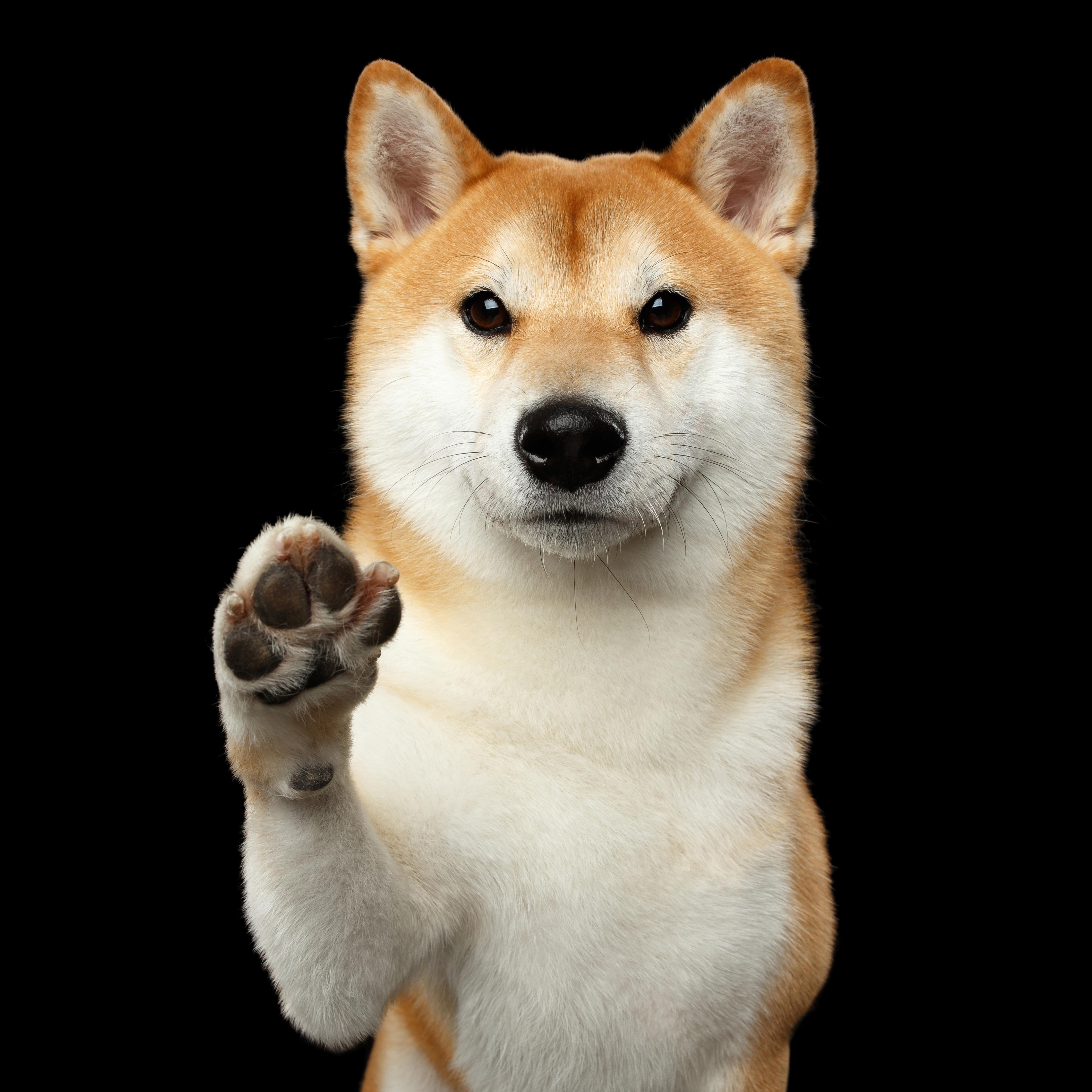
FINAL SCORES WHAT WAS YOUR FINAL SCORE OUT OF 50? LET US KNOW ON FACEBOOK TO SEE HOW YOU FARE AGAINST OUR OTHER READERS! DQ | 4B 71 QUIZ
YOUR DOG QUESTIONS ANSWERED
NOTE
If you are simply bathing your dog to make him smell nice, then rather skip the bath. Many pet fresheners or deodorisers are now available, which can be used safely to help keep your dog smelling fresh instead.
Traditionally, I was taught that you should only bathe your dog once or twice a year, but attitudes about this seem to have changed, and many people seem to bathe their dogs much more often now. Can you bathe your dog TOO often?
The advice is currently to only bathe your dog as necessary to help maintain the natural oils in his coat, as over-bathing can cause dryness, irritable skin patches, dandruff or hair loss. However, providing you are using a specially designed dog shampoo and your dog has no skin conditions, bathing

is generally pretty safe and can even be beneficial –especially if your dog has a tendency to roll in particularly smelly finds!
A gentle shampoo or medicated product can usually be used safely to clean the fur, but it is important you research your breed and hair type before embarking on bathing. Many breeds, such as West Highland White Terriers and Border Terriers for example, are advised against regular baths, as this can soften the wiry texture of the coat. Specialised products are available for particular breeds, so it would be ideal to ask breeders or breed associations for their advice.
DQ | 4B 72
?
I bought my first dog a few years ago. He is a French Bulldog, and I’m ashamed to say I didn’t do enough research into the breed before I bought him. Now that I know more, I’m worried about all these health issues that Frenchies are supposed to be prone to. Is it worth taking him to the vet more regularly for checks, even if he seems healthy now?

French Bulldogs have received some bad press recently, and this is mainly due to the breed growing in popularity in recent years, leading to many unscrupulous breeders starting to breed dogs to fulfil demand without performing the necessary health checks or taking the precautions that responsible breeders do.
The health problems associated with brachycephalic (flat-faced) breeds have become common problems for vets because of the sheer number of these dogs out there. There are now even vets that specialise in brachycephalic surgeries to help open the nares (nostrils) or rectify soft palate issues that can affect breeding.
You say that your dog is healthy, which is a great sign! Of course, if you do develop any concerns, you should take your dog to the vet immediately. Particularly worrying signs in these dogs include struggling to breathe, collapsing, choking, or fainting. In general, however, if you do not see these signs or any others that worry you, you can simply take your dog to the vet for his annual vaccinations and check-up. During the annual check-up, your vet will check his physical body condition, weight, heart and lungs. This should be sufficient in most cases!
DQ | 4B 73 Q&A
Products we love
Shopping fun
PaleoPet Pure THERAWPY Duck, Pear and Ginger Meal for Dogs

This is a power packed and highly palatable product with pear and organic ginger! Pear contains pectin which aids digestion and ginger is not only a digestive aid, but also contains minerals like manganese, which is necessary for cruciate tendon health.
This product is lower in protein, fat and phosphorus than our PaleoPet Pure Classic Complete Meals, and so is ideal for older dogs requiring a bit more fibre and some digestive help, or dogs with liver or kidney issues.
As this product contains only duck protein, it is a great alternative for dogs with chicken allergies.
As with all PaleoPet Pure Complete meals a
healthy dose of Omega 3 from sustainably sourced phytoplankton is added, along with Kelp and Vitamin E. The PaleoPet Pure range is FSA Food Safety certified and DALRRD registered. All products are produced using human food grade ingredients in an Audited Food Safe Facility.
Available in convenient, pre-frozen 1.5kg and 750g tubs or as a box of 12 individually wrapped 100g patties. The tubs are re-usable, recyclable and PBA-free.
Products can be purchased online at www.paleopetpure.com or at selected retailers.
DQ | 4B 74
follow us on Instagram @dogquarterlymag and Facebook dqmagazine stay tuned for the next issue of
NEXT ISSUE 15TH FEBRUARY 2023 www.dqmagazine.co.za
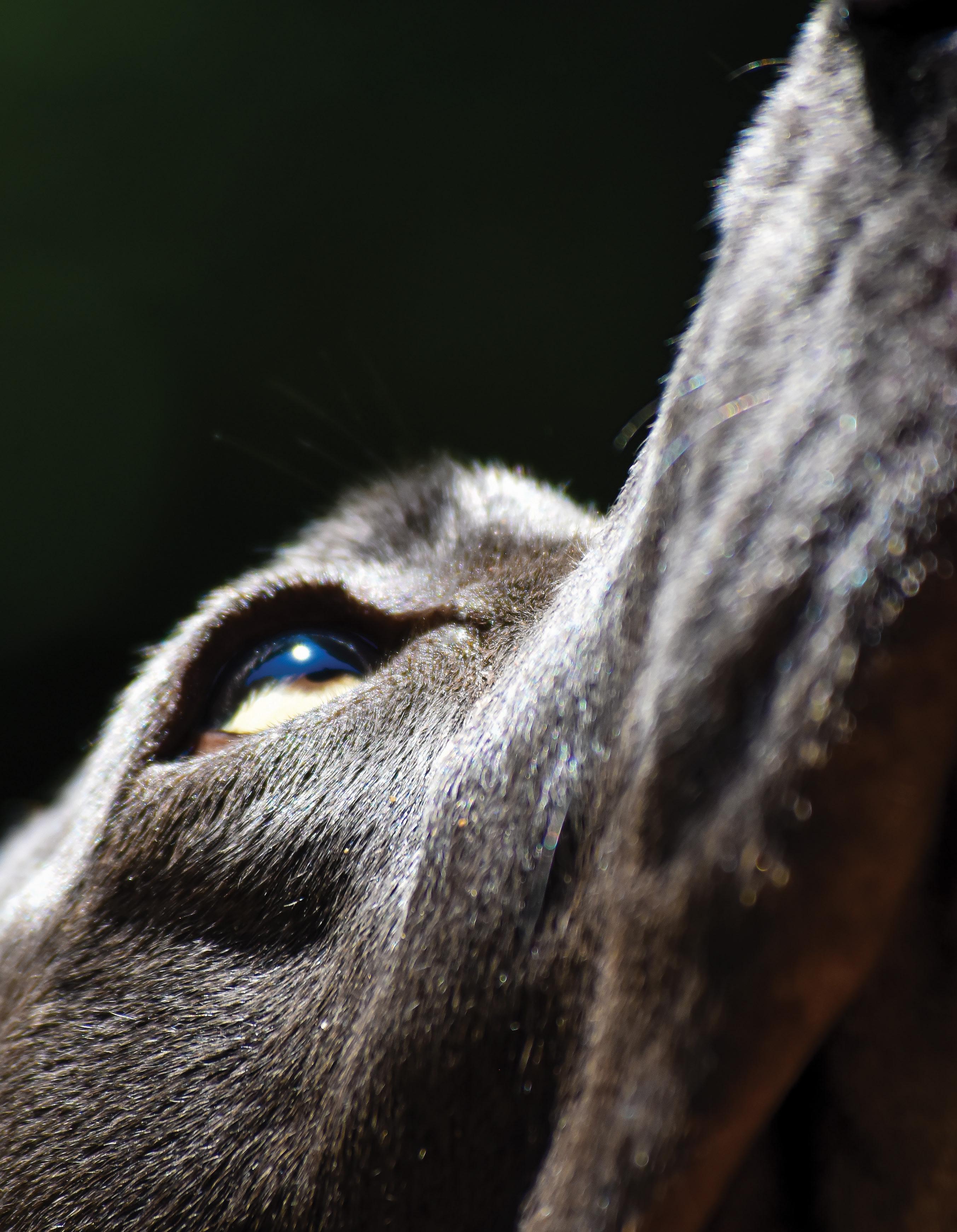

































































































































 Text | Bianca Rootman
Text | Bianca Rootman






































































































